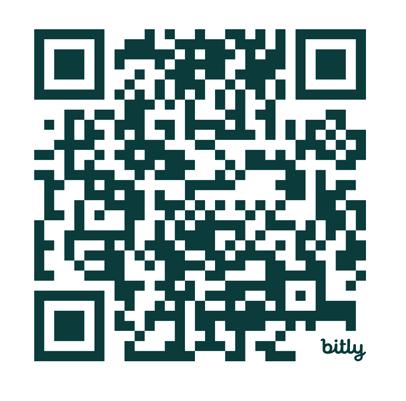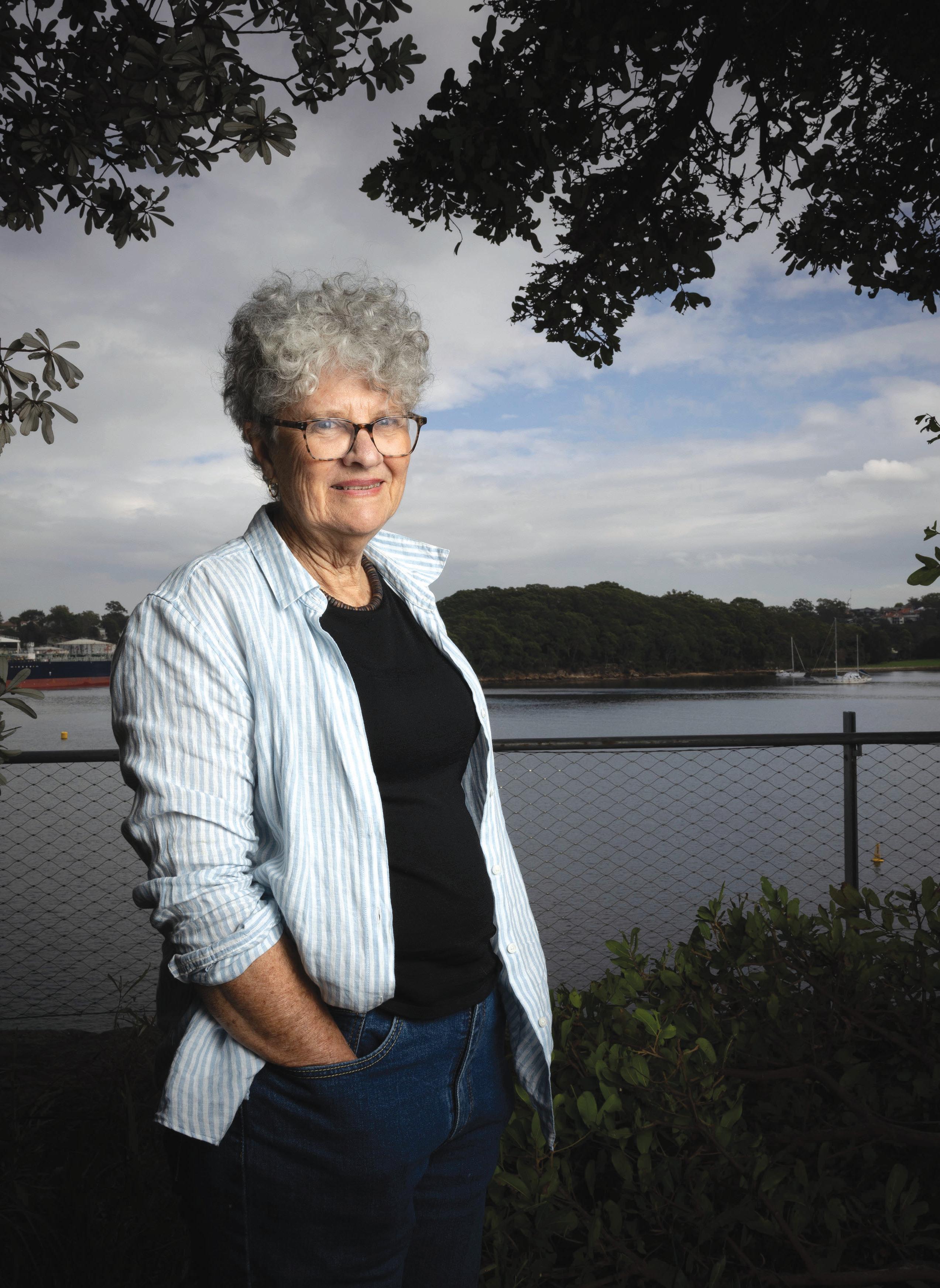
telling Kate Grenville faces up to the past


telling Kate Grenville faces up to the past
Our Aboriginal and Torres Strait Islander tribes were the first sovereign Nations of the Australian continent and its adjacent islands, and possessed it under our own laws and customs. This our ancestors did, according to the reckoning of our culture, from the Creation, according to the common law from ‘time immemorial’, and according to science more than 60,000 years ago. This sovereignty is a spiritual notion: the ancestral tie between the land, or ‘mother nature’, and the Aboriginal and Torres Strait Islander peoples who were born therefrom, remain attached thereto, and must one day return thither to be united with our ancestors. This link is the basis of the ownership of the soil, or better, of sovereignty. It has never been ceded or extinguished, and co-exists with the sovereignty of the Crown.
How could it be otherwise? That peoples possessed a land for sixty millennia and this sacred link disappears from world history in merely the last two hundred years?
With substantive constitutional change and structural reform, we believe this ancient sovereignty can shine through as a fuller expression of Australia’s nationhood.
Proportionally, we are the most incarcerated people on the planet. We are not an innately criminal people. Our children are aliened from their families at unprecedented rates. This cannot be because we have no love for them. And our youth languish in detention in obscene numbers. They should be our hope for the future.
These dimensions of our crisis tell plainly the structural nature of our problem. This is the torment of our powerlessness.
We seek constitutional reforms to empower our people and take a rightful place in our own country. When we have power over our destiny our children will flourish. They will walk in two worlds and their culture will be a gift to their country.
We call for the establishment of a First Nations Voice enshrined in the Constitution.
Makarrata is the culmination of our agenda: the coming together after a struggle. It captures our aspirations for a fair and truthful relationship with the people of Australia and a better future for our children based on justice and selfdetermination.
We seek a Makarrata Commission to supervise a process of agreement-making between governments and First Nations and truth-telling about our history.
In 1967 we were counted, in 2017 we seek to be heard. We leave base camp and start our trek across this vast country. We invite you to walk with us in a movement of the Australian people for a better future.
Endorsed by:
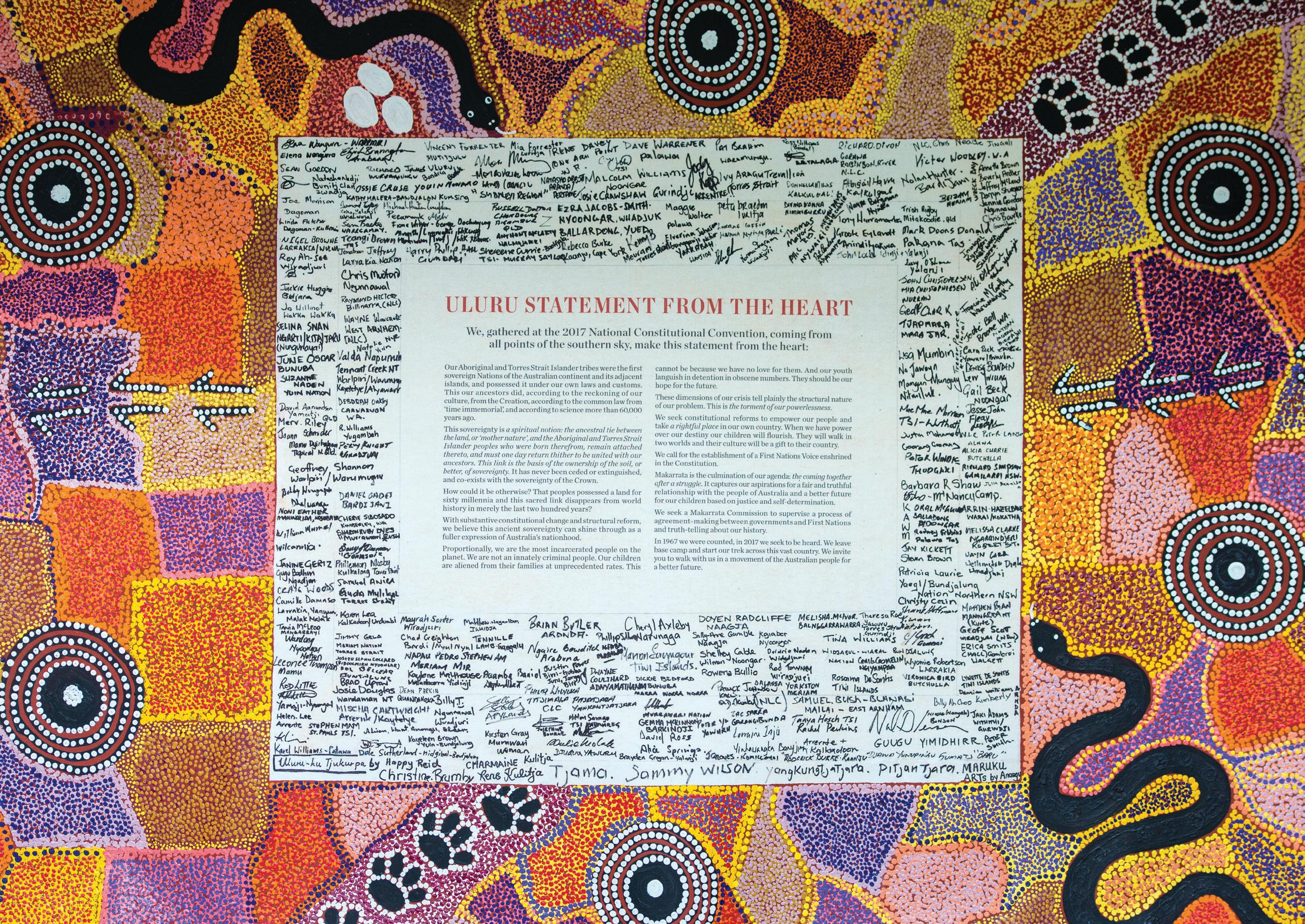

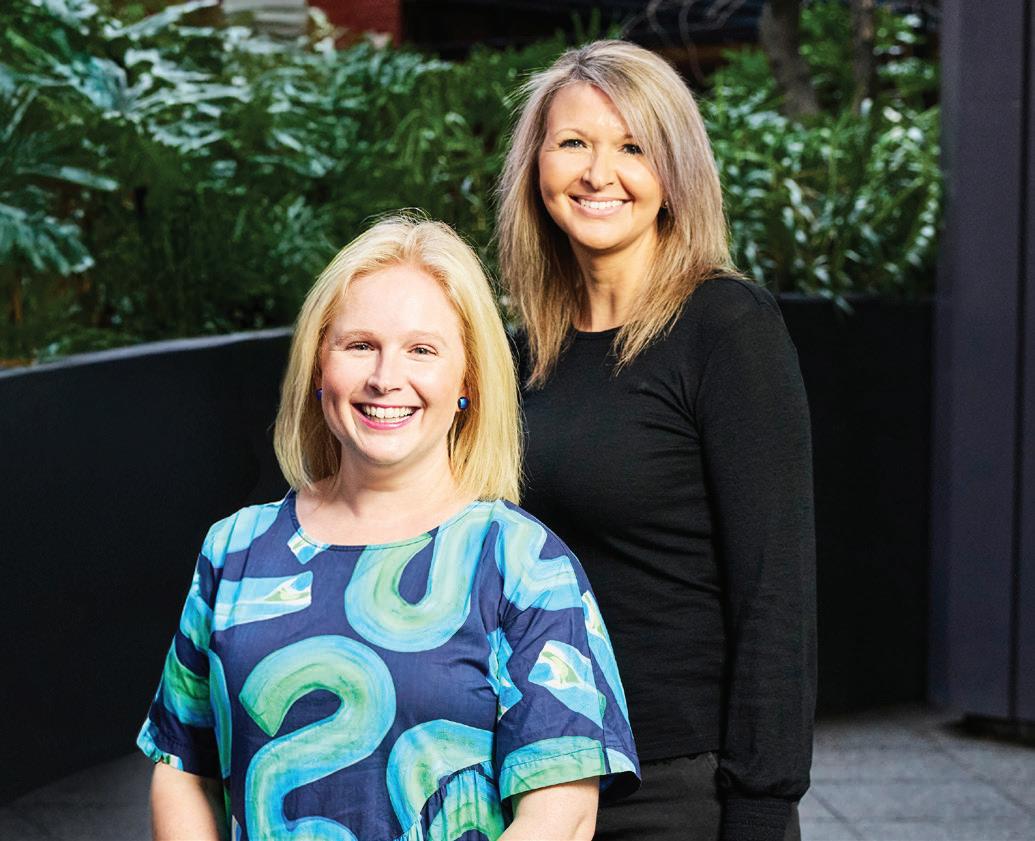

Executive
Chris Ruddle
About us
IE is the professional journal of the Independent Education Union of Australia. It is published for members and subscribers and has a circulation of approximately 70,000. The contents of this journal do not necessarily reflect the views of the IEU or the editors nor imply endorsement by them.
IE online
www.ieu.asn.au/publications/ Contributions
Contributions from members are welcome. Printing does not reflect endorsement and contributions may be edited at the editor’s discretion.
Email iemagazine@ieu.asn.au
Advertising
Chris Ruddle (02) 8202 8900
chrisr@ieu.asn.au
Advertising is carried in IE in order to minimise costs. Advertising does not in any way reflect endorsement of the products or services.
Subscriptions
IE is available free to members of IEU, or by subscription, contact Tania Yardley
tania@ieu.asn.au
(02) 8202 8900
Print Post Number 100007506
NSW and ACT Teachers
Reading this publication may count as PD. Professional reading can be included as part of your PD or PL for maintenance purposes. Remember to log your professional reading. For more information refer to NESA or TQI websites.
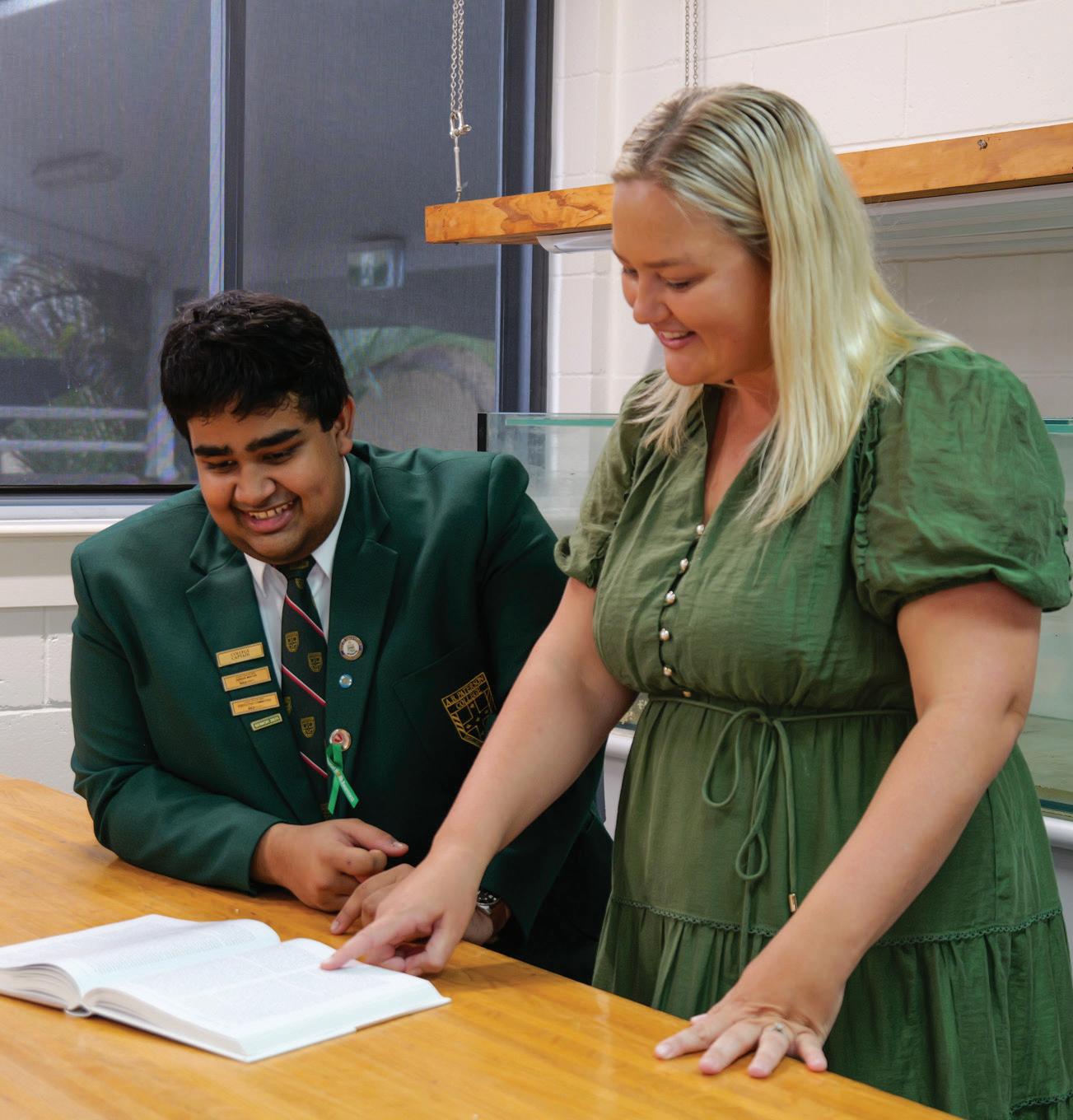

In this edition of IE, we’re proud to feature acclaimed author Kate Grenville (page 6), whose latest book Unsettled details her personal quest to come to terms with Australia’s violent past by visiting the places where her forebears lived.
Kate describes the road trip taken in Unsettled as “do-it-yourself truthtelling”.
Teachers enter the profession to transform futures, not to be buried under administrative tasks. Our feature on time poverty (page 12) explores the IEU’s call for enforceable workload limits to protect core teaching time.
As rising demands pull teachers further from their students, targeted solutions are urgently needed to turn the tide.
Part of the solution is accepting the changing nature of teaching in 2025.
Stories on the anti-bullying review (page 10), moral injury (page 26) and supporting students facing family violence (page 28) reveal how today’s classrooms demand far more than content delivery – they require emotional insight, adaptability and support for increasingly complex student needs.
Diving even deeper into the diverse work done in schools, we examine innovations in civics (page 14), nature play (page 16), music education (page 18), advances in STEM education (page 24), and a powerful new program revitalising Indigenous languages (page 9).
Finally, ACTU historian Liam Byrne (page 22) shares perspectives from his new book, No Power Greater: A History of Union Action in Australia
It’s a history of unionism told not through dry institutional analysis, but the lens of unions as emotional communities.
Liam’s readable, relatable history is an outstanding resource for teachers and a must-read for all union members. Whatever challenges you face – and however much time you have – we hope this edition of IE offers you inspiration and insights.
Carol Matthews
Secretary IEUA NSW/ACT
Branch
A report to creditors has uncovered poor governance and mismanagement at Brindabella Christian College, including hundreds of thousands of dollars spent on a robot dog and an overseas trip.
The report, by administrators from Deloitte, detailed how the Canberra school made questionable decisions, such as spending $460,000 on a robot dog and a trip to the United States, yet failed to pay teachers and school staff on time.
IEUA NSW/ACT Branch Secretary Carol Matthews said members at the school will be “disappointed but not surprised to see the extent of mismanagement and poor governance outlined in the report”.
The administrators found the company behind the school, Brindabella Christian Education Limited, was insolvent from at least January 2021, and company directors may have breached their duties under the Corporations Act on multiple occasions.
The report noted the trip to the United States to secure the purchase of the robot dog included three days at the Kentucky Derby and took place “at a point when [Brindabella] was subject to significant financial distress”.
The administrators said political donations of $30,000 to the Liberal Party between 2021 and 2024 breached regulations prohibiting registered charities from supporting political parties.
Brindabella was placed in voluntary administration in March owing millions of dollars after the IEU took the school to the Fair Work Commission over unpaid wages and superannuation.
In April, Deloitte announced the school would be taken over by education provider Christian Community Ministries (CCM), which paid $30 million for the school.
Despite the mismanagement uncovered by the administrators, it is anticipated that creditors will be repaid in full.
QCT establishes new First Nations Reference Group
IEU member Dr Mayrah Dreise will represent our union in the new Queensland College of Teachers (QCT) First Nations Reference Group.
Dreise is Senior Manager for Aboriginal and Torres Strait Islander Education at Brisbane Catholic Education (BCE) and an active member of our union’s Yubbah Action Group, which oversees the IEU-QNT Reconciliation Action Plan (RAP).
A proud Yuwaalaraay and Gamilaraay woman, Dreise is a highly experienced education professional and an excellent choice of IEU representative to the group.
“For the better part of a decade our union, through the Yubbah Action Group, has been advocating for the QCT to establish a First Nations advisory committee,” Dreise said.
“Such an advisory committee can provide advice to the QCT regarding processes and policies in place not only for First Nations teachers, but all teachers in Queensland schools, to examine how they are being culturally responsive in classrooms.”
Dreise hopes the work of the group will lead to the development of greater cultural capabilities in education stakeholders, including through preservice teacher training.
Northern Territory
Shameful plan restores discrimination exemptions for religious schools
Our union has condemned the Northern Territory government’s plan to restore the right of faith-based schools to discriminate against staff and students.
Changes to the NT Anti-Discrimination Act made three years ago by the previous NT Labor government removed the religious discrimination exemptions that historically permitted non-government school employers to discriminate against staff and students.
At the time of publication, the proposed reforms had been paused while the government conducted further stakeholder consultation.
IEU-QNT Branch Secretary Terry Burke said the proposal to reinstate the religious discrimination exemptions was unnecessary, divisive and harmful.
“We know faith-based schools have the capacity and resilience to continue to operate in the absence of discrimination exemptions – the vast majority of them already do so,” he said.

Burke said the reinstatement of religious discrimination exemptions and weakening the wording of the current vilification provision in the NT did not reflect modern community values and expectations, especially given many faith-based organisations receive public funds.
“Employers still have the opportunity at the point of engagement to determine if an employee is suitable for the position advertised – that has always been the case,” he said.
“The NT government should be looking to build a better and fairer future for Territorians, not take them backwards.”
The IEU is calling on all staff in Victorian Catholic schools –regardless of union membership or role – to sign a statement supporting the union’s application for a Single Interest Authorisation (SIA), essential for fair bargaining towards a new agreement in their sector.
An SIA gives employees access to good faith bargaining orders and, if needed, protected industrial action.
Employers could have applied for an SIA themselves but refused, even though Catholic Church industrial relations guidelines support these rights.
In every other Catholic education sector in Australia, such bargaining rights are standard.
For a union-led SIA to be granted, the Fair Work Commission (FWC) must be satisfied that a majority of all employees who would be covered want to bargain for the proposed agreement.
Following months of consultation, the union’s Catholic Council has endorsed its official log of claims. Chief among its demands are a substantial pay increase, measures to ease workload, and stronger protections for staff safety.
Landmark outcome for fair pay and conditions
IEU(SA) has secured a significant victory at the South Australian Employment Tribunal (SAET).
After extensive negotiations and proceedings in the SAET, IEU(SA) and Wilderness School have reached a settlement that addresses years of underpayments and failures to comply with multiple Wilderness School enterprise agreements.
The settlement includes civil penalties and significant compensation to underpaid staff – including backpay, interest on historic underpayments, additional superannuation repayments and a higher base salary rate locked in as a fairer foundation for future pay rises.
Branch Secretary Tim Oosterbaan said: “Members know that when there is an underpayment, no matter the status of the school, IEU(SA) will fight for them to get what they deserve”.
Ensuring that members have access to clear information, expert support and the confidence needed to act collectively has created a culture where members work side-by-side, sharing knowledge, building solidarity and taking decisive steps toward better outcomes for everyone.
The IEU congratulates our members at Wilderness School for their courage and determination.
This historic win strengthens protections for all non-teaching staff and demonstrates the importance of being union strong.
The FWC handed down a recommendation in July in favour of an IEU member in a dispute about the new right for a noninitial primary caregiver to take 12 weeks paid parental leave.
This right is in the multi-enterprise agreement (MEA) for teachers in independent schools finalised earlier this year.
The dispute concerned an IEU member who applied to be the non-initial primary caregiver in April this year, after the new MEA had commenced.
The school denied his request for 12 weeks of paid leave under the current MEA, arguing that a transitional clause excluded him from the new entitlement because he had taken two weeks concurrent parental leave under the old MEA at the time of the child’s birth.
The FWC rejected this view, confirming that the member’s earlier leave was a separate, completed period and did not prevent him from accessing the new entitlement.
This decision confirms that under the 2025 MEA, teachers who become the primary caregiver within 12 months of their child’s birth are eligible for up to 12 weeks of paid parental leave, even if they had previously taken a short period of concurrent leave.
This means members who were previously denied paid leave may now be entitled to it.
Strong gains for education support staff
Education support (ES) staff in Tasmanian Catholic schools are now seeing the benefits of a new EA, which delivers longoverdue workload improvements – most notably, guaranteed paid break times.
The EA secures a paid 10-minute break, with the option to combine it into a 20-minute rest period.
This small but significant change helps ensure ES staff are recognised for their vital contributions and given the chance to recharge during the day.
Some schools are creatively adapting timetables to meet the new entitlement – such as early finishes where standard breaks are harder to schedule.
According to IEU organisers, most ES staff have either had breaks implemented or are working with leadership to tailor the changes to their school’s structure.
These entitlements were hard-won, following sustained IEU advocacy to correct the widespread issue of unpaid breaks for teacher assistants.
By embedding them in a binding EA, staff now have enforceable protections that improve wellbeing and balance.
This outcome is a testament to member solidarity – and a reminder that collective action is key to winning practical, lasting improvements in schools.
Western Australia
Fighting for support staff in Catholic schools
After two years of searching, the union secured a new office in June – located on the edge of the Perth CBD, which provides better access for members.
The union is in the midst of a major bargaining campaign for support staff in WA Catholic schools.
Catholic employers are attempting to push through a vote on a substandard agreement that fails to offer the same fair entitlements to core conditions enjoyed by their teaching colleagues. It’s a reasonable pay offer, but the proposed agreement seeks to reduce or remove some key conditions.
IEU support staff members simply want for parity in core conditions with Catholic teachers. In September, Catholic employers took the union to the FWC for the second time to force a vote.
We remain firm in our position: Catholic support staff deserve a fair and equitable agreement, not one that reduces conditions.
In July, AngliSchools staff voted no to their proposed agreement. The IEU has returned to the bargaining table, determined to secure meaningful improvements – particularly around addressing the unsustainable workloads faced by teachers.
Bargaining is currently underway or continuing in 26 other schools, with five more agreements expected to be registered before the end of 2025.

Kate Grenville faces up to the past
“That violent past shapes the present – that’s why it’s so important to get it right.”
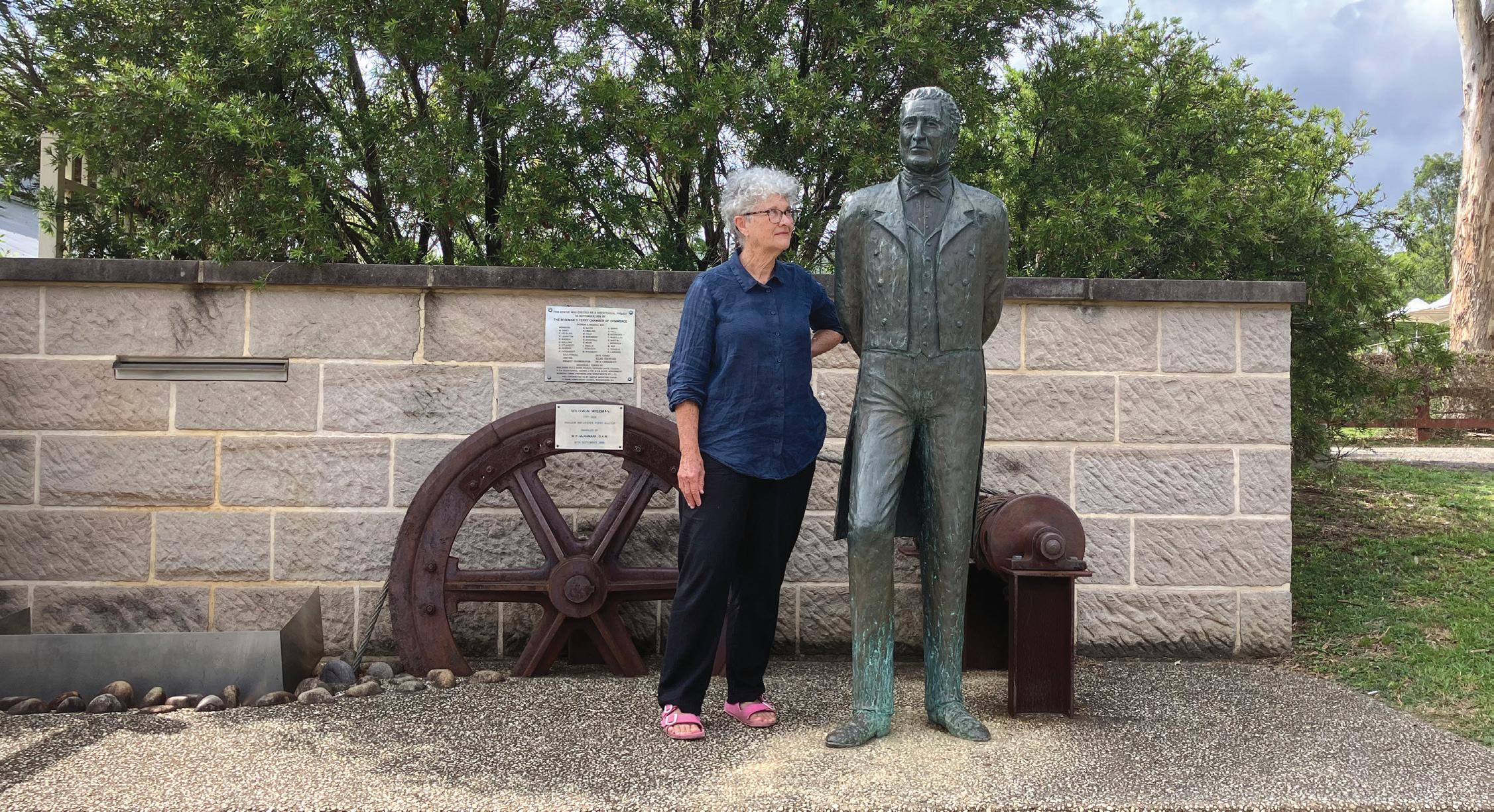
The award-winning author returns to the scene of her ancestors’ crimes in her latest book, writes Andrew Taylor.
When Kate Grenville was in high school, she kept a little notebook under her desk.
Its title was “Teacherisms” and Grenville, the author of acclaimed historical novel The Secret River, says she is “freshly ashamed” of what she wrote about her teachers more than five decades ago.
“In that notebook, I wrote all about the peculiarities, the mistakes, the clothes and the decoration,” she says.
In her defence, Grenville says her observations of the people around her meant “obviously, I was already a novelist”.
Grenville also recalls the notebook was confiscated at one stage and handed around the staffroom, yet she continued to receive mostly glowing school reports.
The notebook was not the only misdemeanour committed by the school-aged Grenville, who was kept back after school when she was caught reading Saul Bellow’s Henderson the Rain King under the desk in English class.
“It’s full of rude things,” she says. “It’s a great book that a 16-year-old girl probably shouldn’t have been reading.”
Grenville says she thought she was “going to get a drubbing”, but her English teacher instead gave her a list of books she should read if she was bored in class.
A bit of a contrarian
One of Australia’s most celebrated writers, Grenville says she has always been “a bit of a contrarian”. “I always looked for hidden things that nobody was talking about,” she says.
Grenville was born in 1950 and grew up on Sydney’s north shore “in a world where it was obvious that boys had all the fun”.
After university, she worked in the film industry, editing documentaries for Film Australia, and in the subtitling department at SBS – in between, she did a master’s degree in creative writing in the United States. An early version of The Secret River was her thesis for a Doctor of Creative Arts from the University of Technology Sydney (UTS).
Grenville has earned a long list of honorary doctorates and awards, including the 2001 Women’s Prize for Fiction for The Idea of Perfection and the 2006 Commonwealth Writers’ Prize for The Secret River. She was awarded a Lifetime Achievement Award by the Australia Council in 2017 and an Order of Australia in 2018.
Grenville’s attraction to untold stories and exploring secrets has been a common thread throughout her career.
Her 2018 book The Case Against Fragrance was prompted by curiosity about what was making her sick.
The Secret River, which was later turned into both a play and television series, was inspired by Grenville’s determination to discover the truth about her great-great-great-grandfather Solomon Wiseman.
In the award-winning 2005 novel, Grenville fictionalises her ancestor as William Thornhill and speculates that he took up arms and shot Dharug people.
Grenville’s family has been a rich source of inspiration for her work. Besides Solomon Wiseman, she has written about her mother, Nance Russell (One Life: My Mother’s Story), and grandmother (Restless Dolly Maunder).
She also drew on family history in Sarah Thornhill, the sequel to The Secret River
Family offers Grenville “a very personal, specific way into the past that isn’t somebody else’s”, she says.
Grenville returns to Wisemans Ferry on the edge of Sydney in her latest book, Unsettled: A journey through time and place
The tiny settlement on the Hawkesbury River is near the beginning of a road trip – “a kind of pilgrimage” – to all the places featured in the family stories that Grenville’s mother shared when she was growing up.
At the beginning of Unsettled, Grenville says she had been circling the book for years, “but the subject seemed too difficult”.
However, it was the defeat of the Voice to Parliament referendum in 2023 that ultimately prompted her to retrace the footsteps of her forebears.
Grenville poses two intractable questions for non-Indigenous Australians: “What do we do with the fact that we’re the beneficiaries of a violent past? If we acknowledge that we’re on land that was taken from other people, what do we do about that?”
Grenville explained her motivations for writing Unsettled at a panel held in May at UTS during National Reconciliation Week.
“I wanted to stand on the exact spot that my ancestors had taken, to name it to myself as taken – as stolen – and to simply sit with that truth and see where that might lead me,” Grenville says.
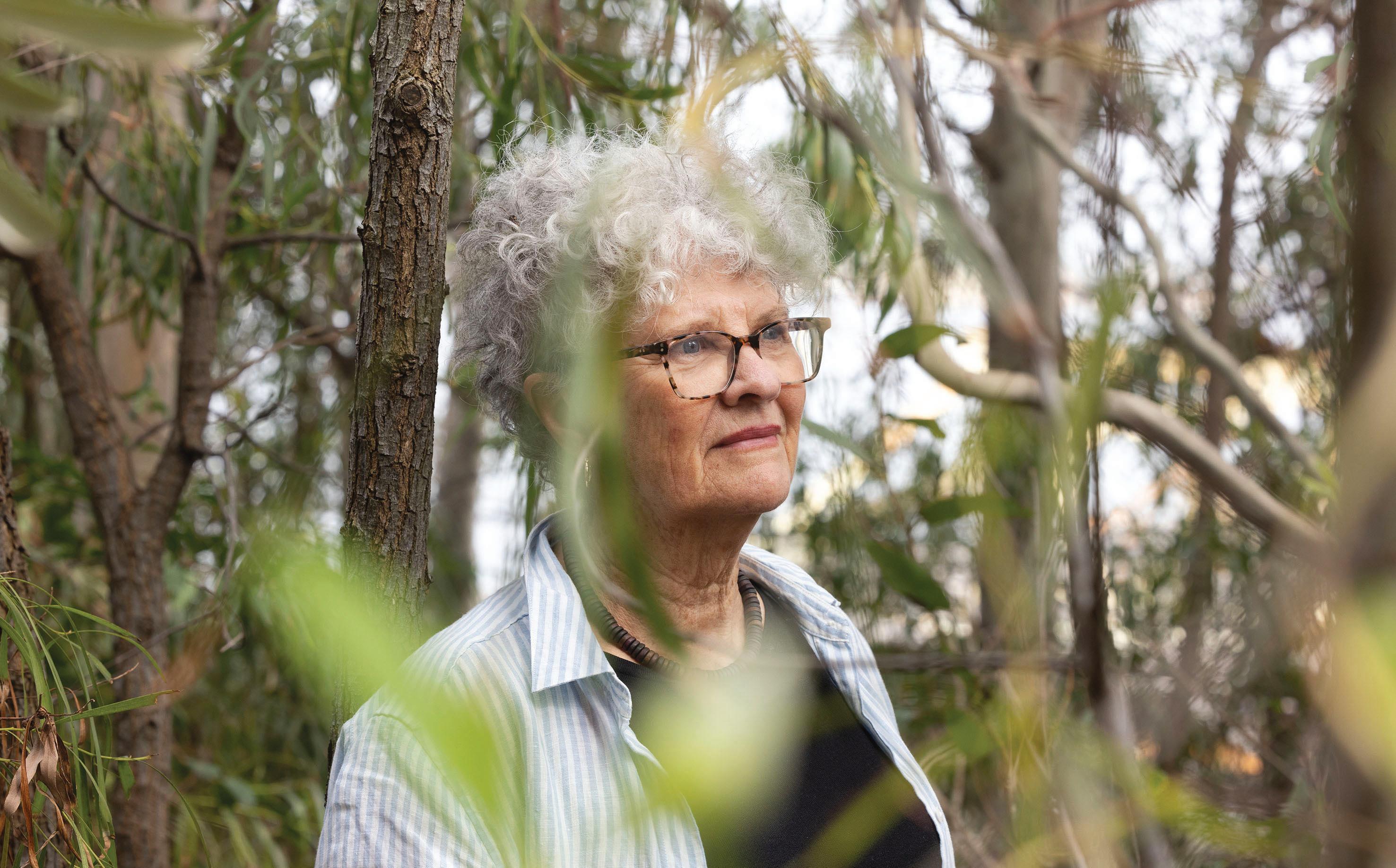
She describes the road trip taken in Unsettled as “a do-ityourself truth-telling”.
“It was, of course, challenging when you look at our past,” she says. “It is a vast, violent crime done by people like my ancestors and that violent past shapes the present, and that’s why it’s so important to get it right.”
She writes about the beauty of the Hawkesbury River framed by towering cliffs and bushland, the fertility of its soil attracting men such as Wiseman.
“Every time I’ve been here I’ve been restless to leave. Today I’m queasy, uneasy, full of a generalised dread,” Grenville writes in Unsettled
“I realised it’s not because of the cliff or the humid air. It’s not about the place. It’s about what I know.
“For me, this is a haunted landscape, haunted by a past that’s all the darker for the things that were never recorded.”
More than two decades after she began researching Solomon Wiseman, Grenville says she feels more horrified by his role in the theft of land and dispossession of Indigenous people.
“Perhaps also I’m readier to let in those bad feelings of horror and shame,” she says.
A sense of unease in the landscape runs throughout Unsettled. Grenville says the title also suggests the word ‘settlers’, which “is one of the many words in our language that actually kind of camouflages or smears over the reality of what happened”.
“It is such a cosy word, isn’t it, to talk about ‘settlers’,” she says. “The actual thing was not cosy in the slightest. It was a crime, basically.”
In Unsettled, Grenville also takes issue with the notion that Wiseman “took up” land at Wisemans Ferry: “What a weasel word of a phrase that is,” she says. “What Wiseman actually did was that he took the land.”
Fear, apathy, shame
For a country that venerates its war dead with a stone obelisk, no matter how tiny the town, Australia largely remains blind to the battles fought on its own soil by European settlers against Aboriginal people.
“I think ignorance is a great deal of it,” Grenville says. “And apathy, I think, comes out of not knowing what was done.”
Grenville says shame and “a fear that something will be taken from them” also fuels the reluctance of non-Indigenous Australians to face up to the country’s violent colonial legacy.
“Look, I have to say that my grandson, who’s five, said to me the other day, ‘Did you know, Granny, that we stole this land from the Wiradyuri?’ We pushed them away,” she says.
Yet the truth about her family’s dark past is confronting, and Grenville admits she was tempted to end her journey in the Hunter Valley as she was menaced by a driver in a 4WD ute.
What kept her on the road was the realisation that “a pilgrimage is not supposed to be fun – it’s not a nice weekend in the Hunter Valley”, she says.
“Part of it might have been a way of politely saying, you know, ‘Bugger you, I’m going to do it’.”
Unsettled: A journey through time and place by Kate Grenville
“A gripping, profound look at colonisation that puts First Nations’ stories back in the frame.”
Harper’s Bazaar
We have three signed copies of Kate Grenville’s latest book to give away.
Two decades after the release of her bestselling novel The Secret River, Grenville is still grappling with what it means to descend from people who were, as she puts it, “on the sharp edge of the moving blade that was colonisation”.
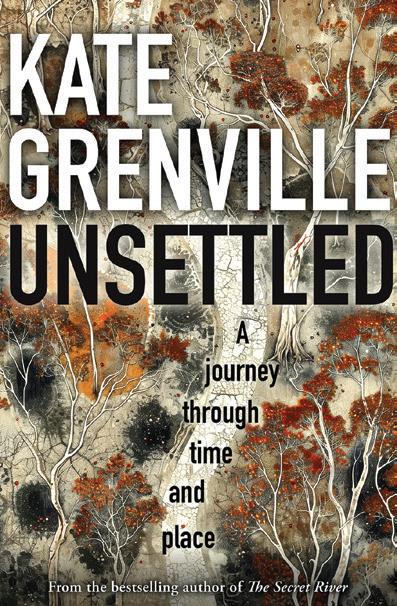
In Unsettled, she once again delves into her ancestors’ past, visiting the places her family stories happened.
To enter, email giveaways@ieu.asn.au with the book’s title in the subject line by Thursday 4 December, and your postal address and membership number in the body of the email.
An innovative digital project is investigating how music can be used to preserve First Nations languages, writes Emily Campbell.
The project is a collaboration between First Nations researchers from the University of Queensland’s (UQ) School of Music and Aboriginal and Torres Strait Islander Studies (ATSIS) Unit, with funding from UQ’s Centre for Digital Societies and Cultures.
Associate Professor Katelyn Barney and Professor Anita Heiss, both from UQ’s ATSIS Unit, joined forces with First Nations artist Deline Briscoe to produce a series of videos exploring the link between language and song.
The project idea was born from discussions between Barney, Heiss and Briscoe about the role of music in renewing and sustaining traditional First Nations languages.
Endangered languages
Australia has more than 200 distinct First Nations languages and over 800 dialects, but the ongoing impact of colonisation and subsequent assimilation policies have led to a crisis of language endangerment.
“Music is often used when teaching language to children; however, there are limited resources available to those who want to learn or connect with their language later in life,” Barney says.
“We wanted to fill that gap and create a resource in the digital space where it’s easily accessible.”
Heiss started her Wiradyuri language learning journey at age 50 with postgraduate study. She says the project was an important way of contributing to the goals of the United Nations International Decade of Indigenous Languages.
“I am passionate about being part of language reclamation and maintenance, both specifically Wiradyuri but also generally,” she says.
The researchers interviewed five First Nations people who use music to learn or preserve their traditional languages.
In many cases, Barney says they felt a sense of responsibility to continue language through music but noted challenges due to history and cultural protocols.
“Some talked about language loss or how they heard segments of language while they were growing up but decided as an adult that learning the language was really important,” she says.
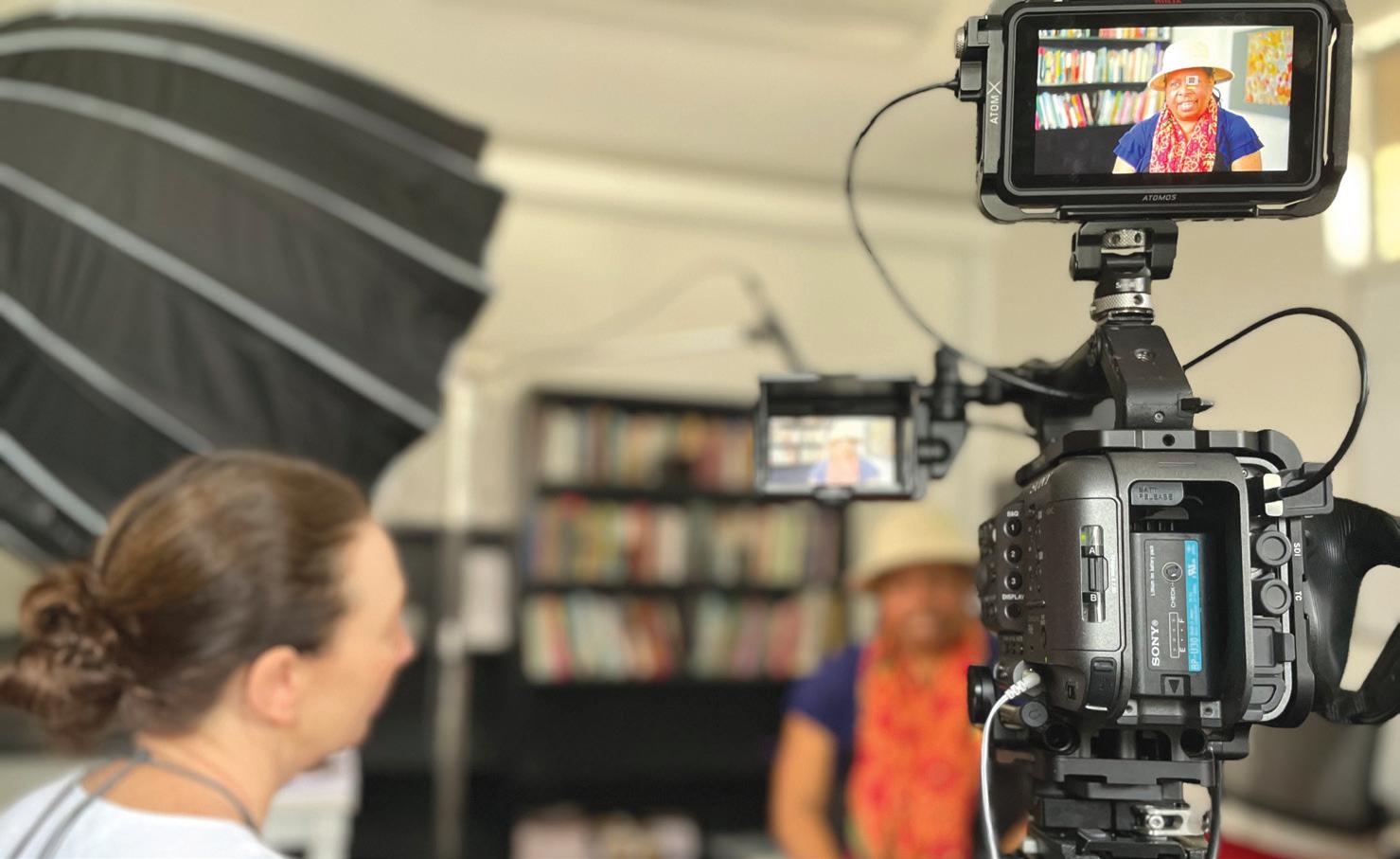
From left, Professor Anita Heiss, artist Deline Briscoe and Associate Professor Katelyn Barney are working on a digital project to preserve First Nations languages.
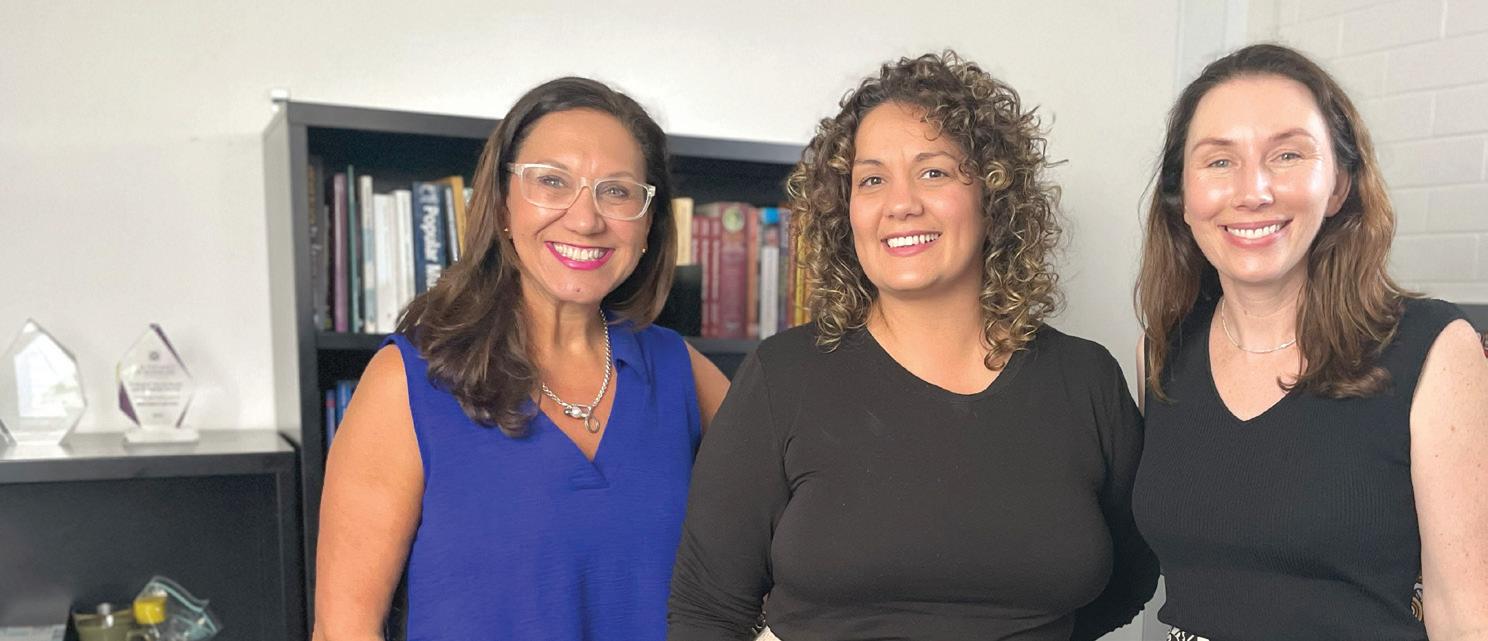
“The people who we interviewed are mostly creating new songs using words from their languages.”
Heiss says the project is an important step in preserving language and creating resources to educate both First Nations and non-First Nations people.
“The maintenance of language requires it be recorded and shared in as many formats as possible,” she says.
“This project is just one of the important contributions to the space.
“It’s timely to have our project get off the ground, and it is a significant contribution to the goals of language preservation at an international level.”
The research team plans to turn the project into other education resources.
“We are in the process of developing a concept for a book that will speak to a broad audience about the role of First Nations languages in music making,” Barney says.
Heiss says she will recommend that resources created for the project are used as foundational information for educators
as well as in the classroom.
“The national curriculum requires looking at Aboriginal and Torres Strait Islander histories and cultures,” she says.
“Music is an efficient and enjoyable way to ease students into conversations about a range of topics and themes related to First Nations peoples and their history.”
IEU members can contribute to preventing further language loss and revitalising uptake through their teaching practice, Heiss says.
“Educators can look at the resources within BlackWords, the First Nations research community within AustLit, and use aspects like the Language and Translations literary trail to inform their teaching.”
Learn about the project and watch the video interviews: bit.ly/3V1PE4w
Visit BlackWords: austlit.edu.au/blackwords
Bullying is a serious health and safety issue for school staff as well as students, writes Will Brodie.
Teachers need resources and training to help them respond to bullying incidents in schools.
This is one of the key messages in the IEU’s submission to the federal government’s Anti-Bullying Rapid Review.
The union’s submission says adequate school resourcing, specialist staffing and sustainable working conditions were crucial for a meaningful and lasting response to bullying.
The submission also calls for:
• genuine employee consultation and participatory planning processes
• targeted strategies to address technology-facilitated harassment and deepfake abuse
• a stronger legal obligation on all school employers to model the values of tolerance and inclusion.
IEUA Federal Secretary Brad Hayes says bullying, violence, sexual harassment and emotional abuse are serious health and safety issues for school staff as well as students.
Employers, policymakers and school communities must set the tone that such behaviour is not acceptable in any context.
“As a deeply complex issue, bullying demands coordinated action across multiple levels, along with a clearer understanding of the most effective strategies for prevention, early intervention and wellbeing programs,” Hayes says.
IEUA NSW/ACT Branch Secretary Carol Matthews says schools are legally obligated to implement measures to ensure employees are safe and free from harassment.
“This positive duty imposes a legal obligation on employers to take proactive and meaningful action to prevent unlawful conduct from occurring in the workplace including behaviour by students towards employees,” she says.
The review, led by clinical psychologist Dr Charlotte Keating and suicide prevention researcher Dr Jo Robinson, is examining current school procedures and best practice methods to address bullying behaviours.
The review received almost 1700 submissions from parents, teachers, young people, state education departments and the non-government sector.
The co-chairs also held roundtable discussions to hear from teachers – including IEU members – about current procedures and best practice approaches that address bullying within schools.
A final report is due to be presented to state and territory education ministers by the end of the year.
Federal Education Minister Jason Clare in June said the rapid review would assist in the development of a consistent national approach to bullying in schools.
“Bullying is not just something that happens in schools, but schools are places where we can intervene and provide support for students,” he said.
“All students and staff should be safe at school, and free from bullying and violence.”
Hayes says teachers, school leaders and support staff have a vital role to play in addressing bullying.
“However, real progress also requires a shared commitment from the entire community to foster a culture of safety and respect, both within our schools and across broader society,” he says.
The union believes there is a strong link between school staff pay and conditions and addressing bullying.
The submission says understaffing, lack of time and insecure work are major wellbeing hazards for the education workforce: “These conditions can undermine the ability of school staff to remain consistently alert to bullying and effectively prevent and address its impacts.”
School staff are overburdened with administrative tasks and excessive compliance workloads, the submission says. “The provision of additional paid time for school leaders and staff to attend any required professional development will be essential to the success of any new anti-bullying programs or strategies.”
Teachers and school leaders also need adequate release time to manage complex behavioural issues, including time to implement and enforce any new anti-bullying policies or approaches.
“School staff need the time and opportunity to debrief incidents and undertake coordinated follow-up with students, parents, external support services and other staff,” the submission says.
Combat bullying
Recent research on bullying emphasises the importance of prevention – anti-bullying policies, classroom rules and discussions about bullying – and what experts call the “whole school approach”.
“Instead of bullying being seen as the responsibility of the principal or other senior teachers to deal with a few “at risk” kids, it is the responsibility of all staff, students and parents – and even the broader community,” Victoria University researchers Fiona McDonald and Nina van Dyke wrote in The Conversation Special exemptions for faith-based schools to discriminate against staff and students must be modernised to reflect community expectations and send a clear message that discrimination is wrong and damaging in all contexts.
“Research shows that LGBTIQA+ students experience far higher levels of bullying, have fewer sources of support and are at higher risk of self-harm,” the submission says.
Other issues raised by the submission include the impact of new anti-bullying procedures on workloads and the importance of safeguards against the bullying of teachers.
The ACTU’s Work Shouldn’t Hurt report highlights the dangers evident in education workplaces. The education industry recorded the highest percentage of workers with mental health injuries (21 per cent).
In Victoria, a recent survey of IEU members in Catholic schools revealed the physical and psychological health of education staff is under serious strain.
Alarmingly, 22 per cent of respondents reported sustaining a serious psychological injury in the past year, while 53 per cent said their health had been affected by aggressive student behaviour during that period.
The IEU’s submission says reducing bullying in schools and ensuring students have the support of teachers delivering anti-bullying programs requires “meaningful government and employer investment in the education workforce and promotion of the teaching profession”.
“Addressing teacher shortages, improving pay and reducing workloads and burnout are essential steps toward creating safer school environments, where staff are respected and supported,” the submission says.
Bullying or harassment at work can erode your confidence, increase stress and make it harder to do your job. The effects can cause severe anxiety and spill over into your personal life.
There needs to be a change in attitude about what staff are expected to put up with – and that includes from their colleagues.
Just because an older staff member experienced something unacceptable, it doesn’t mean you should.
If you have concerns about health and safety in your workplace:
• report the issue to your rep or HSR
• consult your union for advice and support
• contact your state workplace safety agency for guidance or to report serious hazards.
The union is partnering with researchers from the Monash Gender and Family Violence Prevention Centre on a project tackling the harmful influence of the “manosphere” in schools. Funded by ANROWS, the research aims to support secondary school teachers responding to misogynistic online content that often leads to bullying or aggressive behaviour.
The manosphere includes websites and influencers who promote anti-feminist, sexist and controlling ideas. Research shows these messages are filtering into schools, negatively affecting student behaviour and undermining gender equality efforts.
To address this, the project team developed a professional learning program with input from young people and school staff.
The IEU helped promote the program and recruit teachers for the pilot, which ran online in August and September 2025. Optional evaluation activities will follow until December.
New research shows the complexity and volume of work weighs heavily on teachers, writes Andrew Taylor.
Three o’clock signals the end of the day for students, but teachers still face hours of work before they can put their feet up.
New research into the impact of workload and work intensification found teachers reported an average of 2.7 hours work still to do at the end of the school day in preparation for the next school day.
The Time Use, Time Poverty and Teachers’ Work project also revealed more than one-quarter of teachers had four hours or more of work to complete after the school bell rang.
Sydney University education professor Nicole Mockler says the project uncovered good evidence that teachers felt their work was less manageable and more rushed than in the past.
“A significant number of teachers are stretched both in terms of how manageable they feel their workload is and the volume of work they need to do after school to stay afloat,” she says.
Measuring time poverty
A team of researchers – including Queensland University of Technology professor Greg Thompson and associate professor Anna Hogan, University of NSW associate professor Meghan Stacey and Mockler – share the union’s concern about unsustainable workloads.
“We all had concerns about the shape and intensity of teachers’ work, and the factors to do with workload that might have been impacting on teacher stress, burnout and ultimately attrition from the profession,” Mockler says.
The team was particularly interested in what they called “time poverty”, or the relationship between workload (the quantity of work) and intensity (the complexity of work) and the demands these place on teachers.
To understand how time poverty affects teachers, the researchers

developed a time tracker app used by more than 1600 Queensland teachers and 157 school leaders for three days over a two-week period.
“We collected some demographic data about the participants and their schools, and then for each of the three days they used the app as a digital time diary,” Thompson says.
The app featured a series of prompts asking teachers how many minutes they had spent on various activities in a randomly selected block of 30 minutes, as well as the type and number of decisions.
It also included an after-school survey for teachers to reflect on the day and how much work they had left.
Why teachers feel rushed
The research found that responding to student needs and behaviour was the top reason that teachers felt rushed and had an unmanageable workload.
This was followed by managing the welfare of students and staff, marking and data entry, and the amount of work to be covered in lessons.
Hogan says the study also revealed how issues that cropped up had “cascading effects” on a teacher’s day.
“The pressures of dealing with complex student needs and managing student welfare interact with requirements for teachers to complete data entry to document these incidents, which then together eat into their preparation and marking time,” she says.
Ongoing staff shortages made it harder to hire relief teachers to cover absences, which had a knock-on effect in some schools where teachers and school leaders would provide cover for classes and playground or bus duty.
“It was not uncommon for teachers to tell us in their after-school surveys that they had not had a break at all during the day due to these kinds of cascading effects,” Hogan says.
Lesson planning crowded out Stacey says the “triaging” teachers undertake to manage workloads results in them prioritising immediate needs over planned activities and “layering their work so that they are often multitasking”.
“This can mean focusing on the most pressing needs, such as addressing student behaviour and parent concerns via email and phone, while less urgent but more appealing and rewarding tasks like innovative lesson planning are pushed aside,” she says.
Teachers did not cite lesson planning as a cause of their time poverty, Stacey says.
“They were concerned that this core professional duty that requires uninterrupted time and focus – and contributes to teacher job satisfaction – was often pushed aside because of the need to respond to more pressing concerns.”
In a day filled with unpredictable interruptions, including many that take up a teacher’s scheduled non-contact time, Stacey says curriculum work is often left for after-hours.
“This contributes to a vicious cycle where urgent matters consistently take precedence over the critical, yet less time-sensitive, tasks that many teachers find rewarding and sustaining,” she says.
These findings coincide with a 2023 study co-authored by Stacey that found planning and preparing lessons was the most valued part of the job for teachers.
Yet the Quality Time Program introduced in NSW public schools to address teacher workload lumped lesson planning with general administrative tasks, according to the report, Reducing teachers’ workload or deskilling ‘core’ work? Analysis of a policy response to teacher workload demands
“Stripping tasks like lesson planning from teachers risks chipping away at work that teachers have an expertise in and value, which could lead to deskilling,”

Stacey and Mihajla Gavin wrote in The Sydney Morning Herald in 2024.
Stacey says the “low hanging fruit” of tasks such as lesson planning are not the heart of the problem.
Juggling act
Thompson says the research suggests teachers manage time poverty by triaging, layering tasks and multitasking, “along with working long hours that potentially compromise their work-life balance”.
“If we think about this as juggling balls, there is a limit point at which adding just one more ball causes them all to come crashing down,” he says.
“What our research suggests is that education policy has a role in this in that it has continually added to the tasks and expectations of teachers without recognising that they are just adding more juggling balls.”
The IEU has consistently campaigned to reduce teacher workloads to sustainable levels and called for meaningful consultation with teachers to prevent burnout before new tasks or initiatives are added.
Bargaining for enforceable workload limits, including maximum teaching hours, minimum non-contact time and defending the right to disconnect, are just some of the ways the union is fighting to reclaim time for members.
The IEU worked with the federal Department of Education on the national Teacher Workload Impact Assessment tool, which is designed to assess the workload implications of new initiatives before they are adopted: bit.ly/teacher-workload-tool
To address burdensome workloads, the IEU calls on employers to:
• redefine workload through the lens of time poverty, not just checklists
• regulate face-to-face teaching time and class complexity
• protect non-contact time from being absorbed by relief duties or unplanned tasks
• guarantee breaks for all teachers
– this means real lunch breaks and recovery time between demanding days
• prioritise teaching and learning over peripheral duties
• slash unnecessary compliance and administrative burdens
• embed collaborative planning into the school day.
“It was not uncommon for teachers to tell us they had not had a break at all during the day.”
Civics and citizenship education in Australian schools is not up to scratch, with students’ proficiency plummeting to record lows, writes Emily Campbell.
Most school students do not understand the basic principles of Australia’s democracy.
Data from the Australian Curriculum, Assessment and Reporting Authority (ACARA) shows more than 70 per cent of high school students failed civics and citizenship testing.
Almost 10,000 students sat the test, run by ACARA in 2024, which measured knowledge of Australia’s government, rights and legal obligations and national social values.
It’s little wonder federal politicians want civics and citizenship education to be strengthened and standardised.
Developing a course to prepare senior students for voting was also recommended by the Joint Standing Committee on Electoral Matters in its report, From Classroom to Community: Civics education and political participation in Australia
University of South Australia associate professor Joel Windle says education has a vital role in protecting democracy.
Windle says Australia’s democracy depends on citizens being informed and engaged, particularly in a system of compulsory voting.
“Rising misinformation, disengagement and distrust pose serious challenges,” he says.
“Civics is often under-prioritised, outdated and disconnected from students’ lives, with many teachers lacking the confidence to address contemporary or controversial issues.”
Civics and citizenship education is part of the Australian Curriculum but is not compulsory, and some states only briefly address the topic in primary school.
Experts argue it should be taught as a standalone subject, so it does not get lost among other content.
Western Sydney University associate professor Jorge Knijnik says democracy is more than just politics and the ballot box.
“It’s a way of life that must be nurtured, protected and renewed through education with each generation,” he says.
“A strong democracy thrives when people have multiple ways to actively participate in shaping their communities.”
Both academics want schools to include a greater focus on democracy in their teaching and extra-curricular activities for students.
Windle says citizenship and civics education in schools is important for learning about the mechanics of voting and the roles played by politicians.
“Young people need to have experiences participating in democratic decision-making processes in schools and other organisations in order to become informed voters in elections,” he says.
“Such involvement is also important for them to realise that voting is just one way of participating as a citizen, and that there are many other ways to make your voice heard.”
Knijnik says even young children can benefit from experiencing democracy first-hand, engaging in decisions that shape their school environment and learning journey.
“Young people have endless access to information, but real democracy requires creating spaces where they don’t just talk about change, they live it,” he says.
“Schools can foster participatory councils where older students can debate, propose solutions and experience the realities of civic leadership.
“Authentic leadership opportunities in schools can be made accessible to all students, not just those handpicked within rigid structures.”

Whether in assemblies, councils or collaborative projects that tackle real-world challenges, Knijnik says every student should have a voice in shaping their school.
“Digital literacy must be integrated into democratic education, ensuring students engage with media critically rather than passively absorbing its narratives,” he says.
Master class
Local, state and federal elections are ripe with teachable moments when it comes to democracy, civics, critical thinking and media literacy. With children and teenagers exposed to political issues via social media, election periods are critical opportunities for teachers to shape students’ understanding of democracy.
Windle and Knijnik emphasise that modelling, not undermining, democratic values is vital to helping children grow into active, connected citizens.
Windle says election campaigns are a master class in deflecting questions, talking to pre-set points, controlling and shutting down debates and avoiding controversy.
“So rather than arming voters and young people with valuable information upon which to base decisions, politicians are demonstrating the exact opposite,” he says.
Teachers can help students think critically and deconstruct politicians’ carefully scripted messages and spin.
“There are key roles for teachers and parents in teaching young people to be critical consumers of media at election time,” Windle says.
“In schools, critical literacy is a long-standing approach to critically interpreting texts that can be brought to bear on election material, including misinformation.”
Fostering a classroom environment where students feel comfortable and empowered to ask questions and have healthy, respectful discussions is another form of democracy in action.
Media makers
Students may perceive civics and politics as dry and irrelevant, so keeping lesson content engaging and relevant is key. Windle says students’ knack for digital technology and content creation presents a valuable opportunity for lessons.
“A useful approach in schools is to support students to be media producers, through activities such as making podcasts,” he says.
“This gives students the experience of activities such as researching reliable information, collecting multiple perspectives and providing an honest account of an issue.”
Windle also says upper-primary school-aged children are more than capable of tackling complex social and political topics.
“With the right support, they can investigate anything from local concerns such as unsafe streets to global challenges like climate change,” he says.
“We also know they are excellent producers of digital content.
“Blend these together and you get students who can research, reflect and represent issues in balanced, thoughtful ways, while navigating and filtering digital content.”
Young people who are highly tech-literate are in a stronger position than many adults and so can educate older generations about topics such as AI-generated deepfakes.
“That’s the essence of democratic citizenship,” Windle says.
Professional development critical Government and employer investment in professional development to upskill teachers and improve their understanding of law, government and politics will be essential to improving student outcomes.
Knijnik says teachers can gain valuable insights from ongoing media literacy programs to critically engage with how the media portrays broad topics like education and democracy.
“These funded professional learning programs will support teachers and the students they teach,” he says.
“It will provide skills to critically analyse media narratives, enabling them to be aware, navigate and challenge dominant discourses around citizenship and democratic values.”
ACARA has new resources to support teachers in developing media literacy knowledge from Foundation to Year 10, specifically in Media Arts, English, and Digital Technologies.
Curriculum connection: Media consumers and creators focuses on four aspects:
• understand and analyse contemporary media
• create media content
• communicate and share media content
• be critical and ethical.
The online resource enables educators to filter information on conceptual themes from the Australian Curriculum by year level, learning area, general capability or cross-curriculum priority.

Curriculum connection: Media consumers and creators: bit.ly/3VADujm
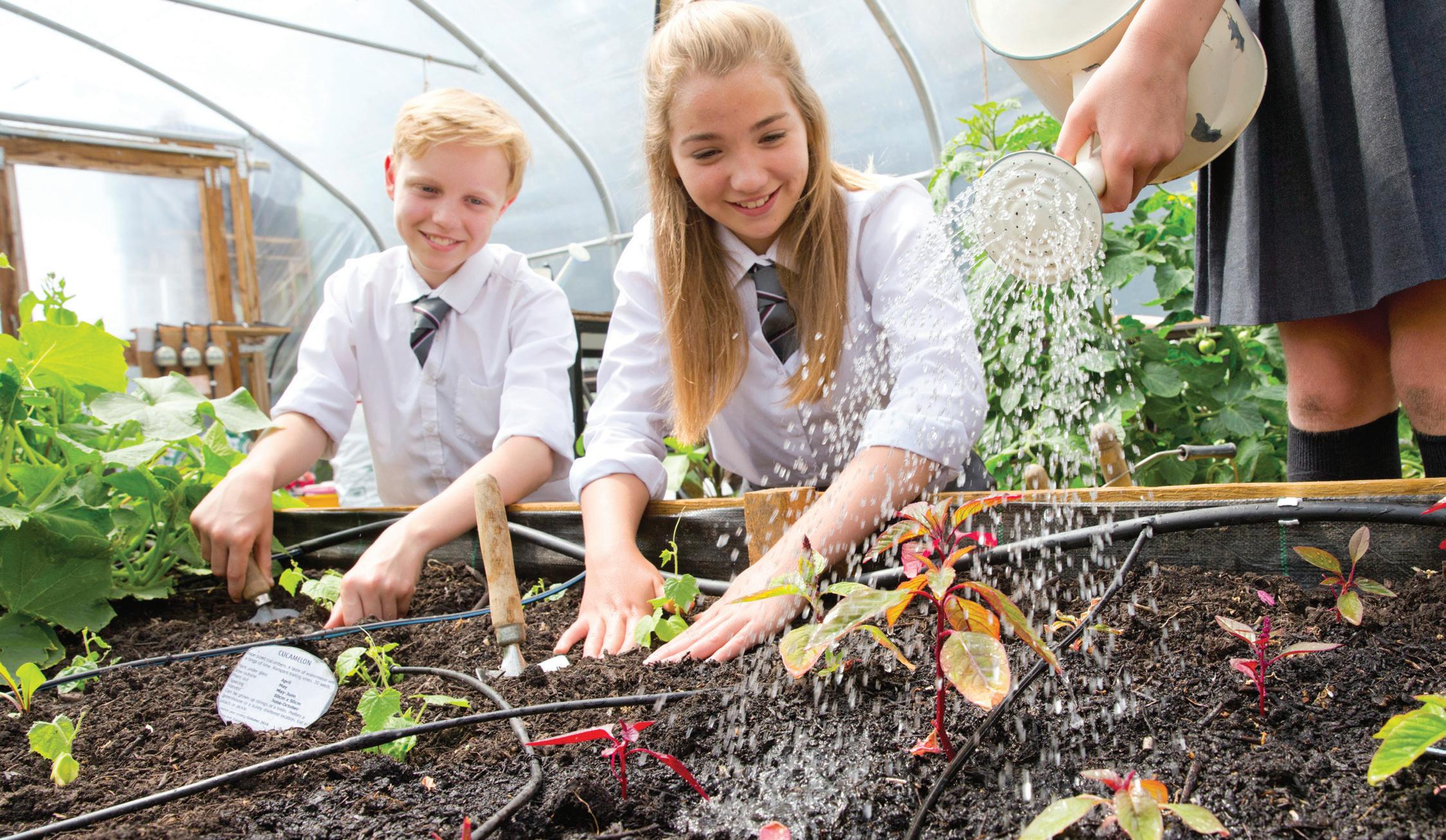
Outdoor learning can enhance the physical, social and cognitive skills of primary and secondary students, writes Ella Doyle.
A growing body of evidence points to the benefits of time spent outdoors and engagement with nature for children’s health and development.
Postdoctoral researcher in the University of South Australia’s Alliance for Research in Exercise, Nutrition and Activity team, Dr Kylie Dankiw, is an expert exploring this phenomenon.
“Nature play offers rich, open-ended opportunities for students to collaborate, experiment and adapt,” she says.
“When provided with loose natural materials like sticks, rocks, or ropes, students often use their social skills, imagination and creativity to build structures, invent games, negotiate rules and solve challenges together.”
Dankiw says these experiences spark problem-solving, collaboration and creative thinking.
“Resilience is nurtured when students persist with tasks that might be challenging, whether balancing on uneven surfaces, attempting new climbing challenges or adjusting strategies in group games,” she says.
“Such experiences mirror real-world problem-solving and strengthen socialemotional skills, equipping students to approach challenges with confidence and adaptability,” she says.
Barriers to nature
Teachers face several barriers when it comes to incorporating nature play and outdoor learning in their practice.
Dankiw says a key challenge is having access to sufficient or suitable green space within the school environment, or close by for some schools in highly urban environments.
“Time is another major challenge as teachers juggle competing curriculum requirements and assessments within an increasingly crowded timetable,” she says.
“With schools under mounting pressure to improve standardised test scores, non-academic activities such as play may often be sidelined.
Nature-based activities are sometimes viewed as more time-consuming to set up and pack away, and with so many competing demands, they can easily be overlooked, Dankiw says.
“Teacher confidence can also be a barrier with some feeling uncertain about managing risk outdoors, linking outdoor activities to curriculum outcomes or adapting lessons for outdoor settings.”
One of the easiest strategies is to take existing lessons outdoors.
Primary education suggestions include:
• reading time can be held outside in a shaded area
• maths lessons might involve measuring natural objects
• science classes could explore biodiversity in the schoolyard.
Secondary education suggestions include:
• geography or science fieldwork in local environments
• drama performances in outdoor spaces
• using nature as inspiration for English or visual arts.
Dankiw says even small spaces can provide meaningful opportunities for outdoor learning and play.
“Schools might use courtyards, verandas or even local parks as extensions of the classroom,” she says.
“Vertical gardens, container plants and portable loose parts can transform hard surfaces into dynamic spaces.
“The key is creativity and seeing every outdoor space, no matter the size, as a potential learning environment.”
Dankiw recommends Outdoors Victoria’s Learning in the Outdoors toolkits as a valuable resource for both primary and secondary school teachers.
“These free, online toolkits align with the Australian Curriculum and offer practical lesson ideas and comprehensive activity guides for outdoor learning,” she says.
“Nature Play Australia also provides excellent resources and lesson plans to support educators and teachers in embedding nature-based learning.
“In addition, the Queensland Department of Tourism, Science and Innovation hosts a range of resources to engage students in citizen science projects.”
Resources
Outdoor Victoria’s Learning in the Outdoors toolkits: bit.ly/4n3Fv3w
Nature Play Australia: natureplay.org.au
Citizen science school teacher resources: bit.ly/41ZV2sM
A university professor aims to close the STEM equity gap by teaching coding and robotics to students, writes Tania Yardley.
Walayat Hussain is passionate about providing access and opportunities to students who are often excluded from participation in STEM education.
“Too many bright students never get the chance to imagine themselves in a tech or engineering job, and that’s a systemic failure,” he says. “We must fix that.”
Hussain’s answer was to offer students from schools in western Sydney a workshop in learning how to drive a robot using drag-and-drop blocks of code on an electronic tablet.
An associate professor of information technology at the Australian Catholic University (ACU), Hussain wants to know if this stimulates an interest in a STEM career among students from low socio-economic and refugee backgrounds.
“The future is digital, and we are building it without some of our most creative, resilient minds,” he says.
Workshop program
In July, Hussain and his team, Dr Mehdi Rajaeian and Dr Mahmoud Bekhit, ran a five-day program with 42 Year 10 students from 14 government, Catholic and independent schools. The workshop ran over the school holidays so as not to interfere with regular classes.
Students were given a robot car and tablet and were introduced to coding. They were also able to take the equipment home at the end of the workshop.
Hussain describes the changes in students over the five days as “extraordinary”.
“Some students walked in shy, disengaged and unsure of themselves on the first day,” he says.
Many students had never heard of algorithms or other simple related concepts, but the transformation was rapid.
“By day three, they were coding games. They were collaborating confidently, and leading group challenges,” Hussain says.
By the final day, students were presenting their projects, and some were even writing a Python program, a more difficult form of coding normally taught at university.
Access and possibility
Research shows students who have not had early access to STEM subjects are less likely to consider careers in science and technology.
Artificial intelligence, machine learning, coding and robotics are rapidly evolving fields with high demand for skilled workers. Developing autonomous cars and robot waiters are now realworld job opportunities.
“This was not just about teaching STEM,” Hussain says. “It was about unlocking belief, building belonging and showing students who they could become.”
Hussain was surprised by “how quickly students change their own narrative.”
“One student told me, this is the first time I felt smart,” he says.
“Students who said, ‘I’m not techie’ on the first day, left the workshop saying, ‘I want to be a programmer’.”
STEM in schools
IEU member and science teacher at St Agnes Catholic High School in Rooty Hill, Tahlia Hitchcock says the study has had a positive impact on students.
“Successfully completing a project, especially one they design or build themselves, can give students a big confidence boost,” she says. “They see first-hand that they can tackle challenging tasks.
“Hands-on, real-world STEM projects often make learning more relevant and fun”.
Of course, teachers face barriers to teaching STEM in schools. Equipment can be expensive, and programs are extra-curricular.
“Often the biggest barrier is access to resources,” Tahlia says. “Wanting to create and allow our students to engage in these opportunities is important to us.”
Taking it further
While the initial program was conducted with just 42 students, Hussain says it could be expanded and potentially include teachers as well.
The program is already having a positive impact, with some students who took part now acting as STEM ambassadors in their schools and at ACU Open Days this year.
For Hussain and his team, the question of access to STEM has wider social implications.
“We need diverse thinkers to design ethical, inclusive technology. Equity in STEM is not charity, it’s justice,” he says. “It’s smart policy, and it’s how we build a fairer future.”
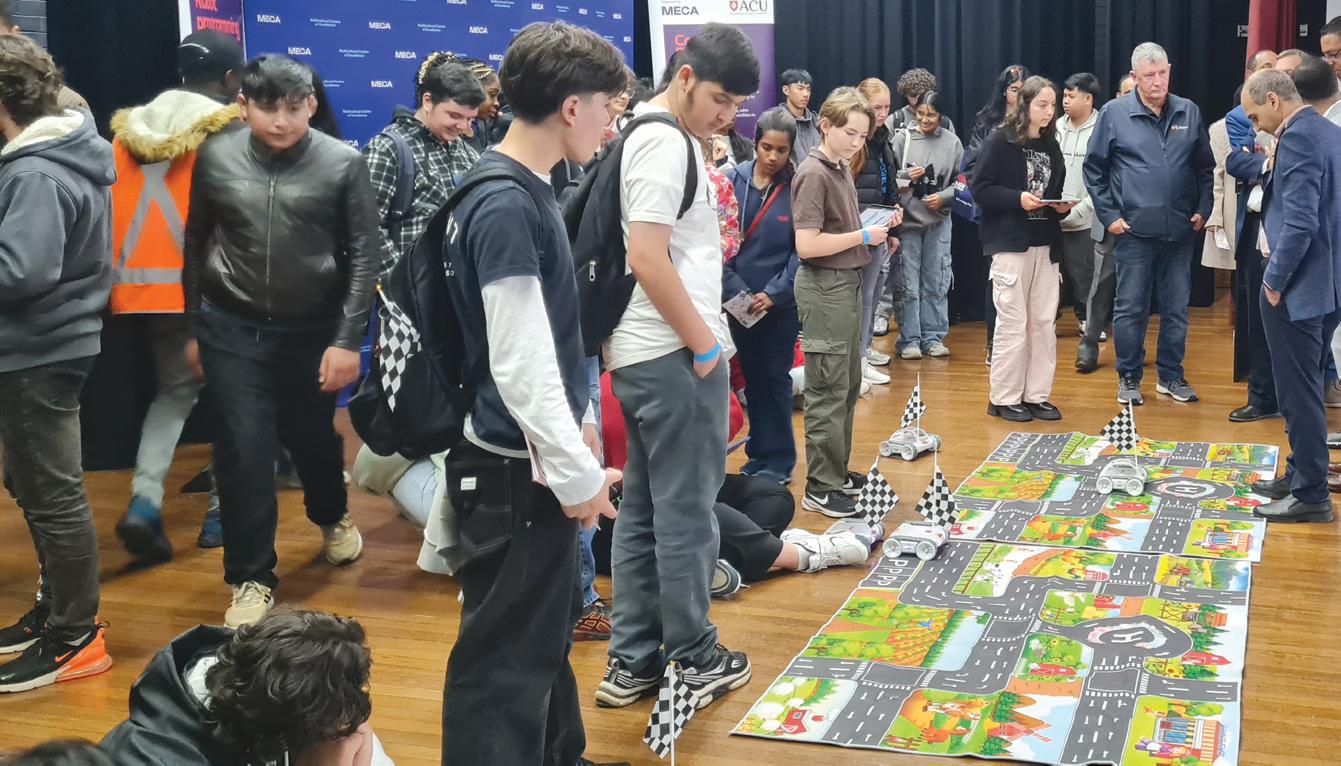
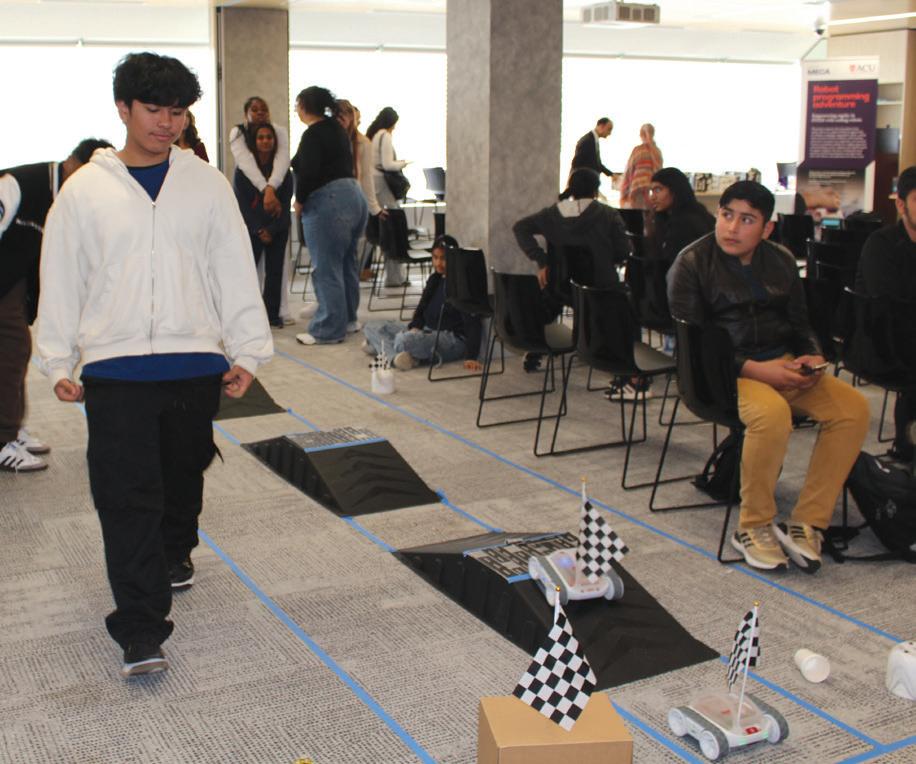

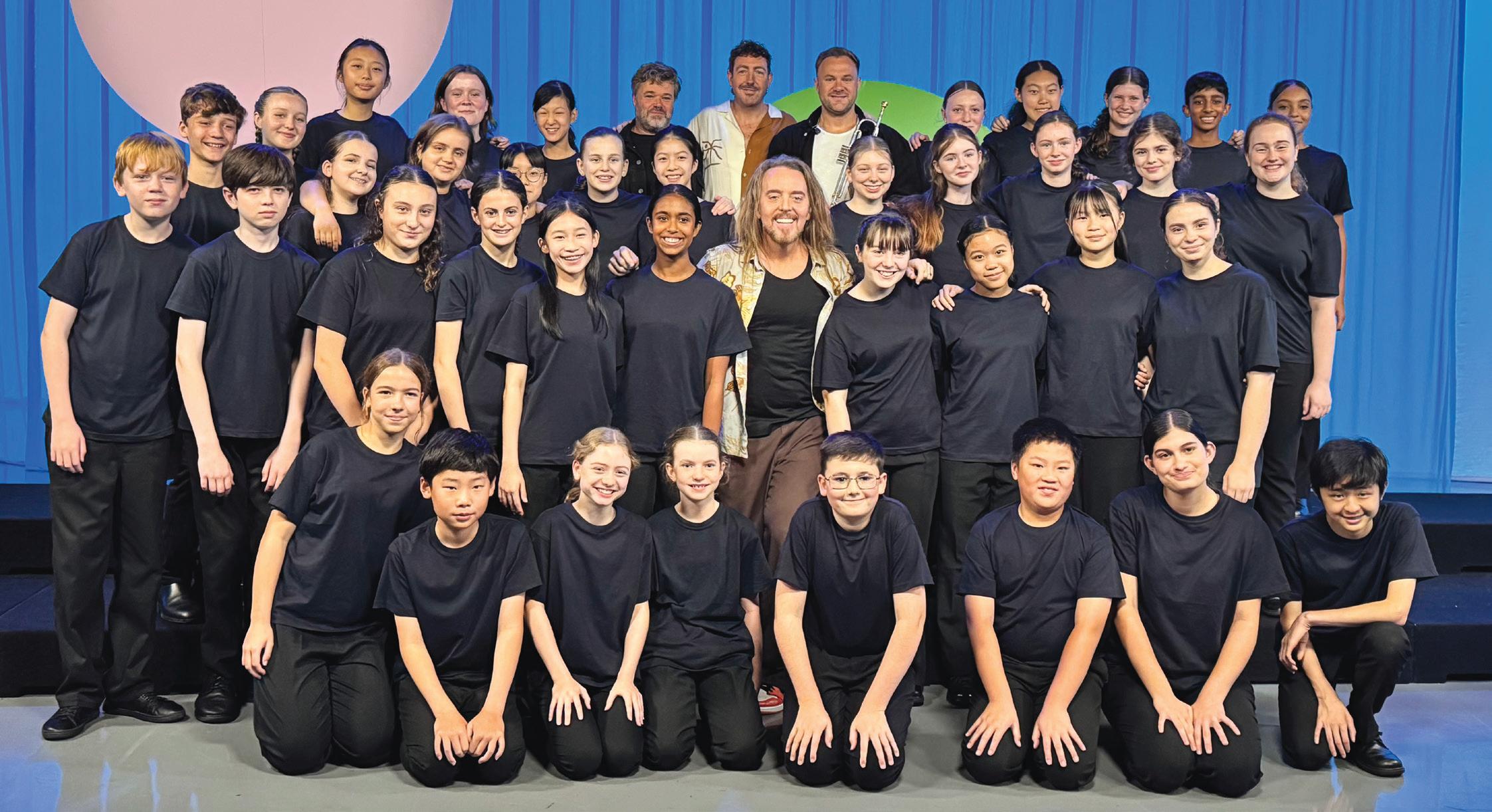

Singing can play a crucial role in primary schools if teachers have the resources and support, writes Andrew Taylor.
When lawmakers in Queensland passed the State Education Act in 1875, singing was included as a core subject in primary schools alongside reading, writing and arithmetic.
“The values of that time were very different,” says music teacher Dr Margaret Hoey. “Live music-making was highly valued and anyone who had musical skill was appreciated as an important member of the community.
“The options for music-making were limited and voice is one thing everyone had.”
Music education is a compulsory part of the Australian curriculum.
But Hoey says the training that teachers receive to teach music in their university degrees and through professional development has decreased significantly in the past 20 years.
“As a result of this, generalist primary teachers are not as equipped and confident as they need to be to deliver music education effectively,” she says.
“Music has enormous benefits for wellbeing, self-regulation, a sense of belonging and social cohesion in a school.”
This is despite a growing body of evidence showing the educational and developmental benefits of music.
A primary school music teacher for more than two decades, Hoey says learning music has been found to enhance cognitive development in ways that support students’ learning across many school subjects.
“And making music in a group has enormous benefits for wellbeing, selfregulation, a sense of belonging and social cohesion in a school,” she says.

Invisible thread
Hoey’s PhD thesis, When the song sounds: Exploring the impact of singing-infused classrooms in general primary education, examines how specialist music teachers can encourage colleagues to incorporate singing in lessons.
“Singing is the invisible thread that connects people to the work, to each other and to themselves,” Hoey writes.
In practice, Hoey says singing can be used for classroom management, as a wellbeing tool and for curriculum purposes.
But her research uncovered barriers to bringing song into primary classrooms, beginning with time constraints.
“Confidence is another barrier because universities do not include music in general primary courses anymore,” she says.
“There is no central resources bank for teachers to access –they have to hunt down singing resources individually.”
A lack of equipment can also be a hindrance, Hoey adds.
“Not all classrooms have working digital sound systems. Saving and storing songs digitally is another problem.”
Hoey outlines three types of support – community, resources, mentoring – needed by primary school teachers to use singing in their classes.
“If the school community values singing, then it is easier to establish singing behaviors,” she says.
“At my current school, I make the audience sing at every choral concert. They sing along very well. This may not be received well at some schools.”
Hoey also advocates for digital song banks everyone can utilise: “Basically, we need a librarian and a tech team.”
Finally, she says that when music teachers support generalist teachers, there can be social, emotional and intellectual benefits for the whole community.
However, mentoring teachers has workload implications – specialist music teachers are already overcommitted with teaching, extracurricular activities such as choirs and often play a leading role in school events.
“Everyone is working hard in their own space, and some teachers are already working at full capacity,” Hoey says.
“They are already overcommitted, but we see the benefits of helping class teachers as well, so we do it – but it can lead to burnout.”
Hoey says her doctoral research at the University of Queensland was prompted by a lifelong curiosity about the transformational power of singing.
In her experience, Hoey says encouraging singing in class is a “constant process of engagement and re-engagement”.
“Each season and cohort bring new singing challenges whether it be vocal issues, repertoire issues, attitudinal issues, cultural issues,” she says. “I am fortunate and have had little trouble engaging students over the years.
“You just need to be inventive and meet the students where they are at. It is about engaging with the context and finding repertoire that speaks to them.”
Most of Hoey’s general teaching colleagues are shy singers but “they have a go anyway”, she says.
“Some of them are afraid of singing themselves, but not afraid of using singing in the classroom – they find ways for the class to sing without using their own voices,” she says.
“The research project has given me an excuse to keep updating singing suggestions for general teachers and the whole school.”
Sammy J is one of the famous faces lending his voice to ABC Education’s Let’s Sing, writes Andrew Taylor.
Singing is one of Sammy J’s fondest memories of his primary school years.
The comedian and radio presenter says music classes with his teacher were “an oasis in the middle of a day of maths and sport”.
“He’d have the guitar out, and we’d all be there with songbooks, singing ‘Rip Rip Woodchip’ and other Aussie classics,” Sammy says.
Sammy brings another classic Australian song to life for ABC Education’s Let’s Sing collection of online music resources for primary schools.
Sammy says Ben Lee’s song “We’re all in this together” felt like “a really natural fit” for him to perform with his brother, Tim McMillan.
“It’s so unashamedly optimistic,” Sammy says. “I could see why it would be a really great song for classes to be singing along to and learning as well.”
Other well-known performers who lend their voices to Let’s Sing include Justine Clarke, Casey Donovan, Eddie Perfect and opera singer Teddy Tahu Rhodes.
Let’s Sing features short videos of a song performance followed by “Andy’s Music Class”, a lesson given by composer and music educator Andy Aronowicz.
Andy says Let’s Sing is a decades-old educational program that originally took the form of songbooks and radio programs.
These days, it is an online collection of songs, lessons and other teaching resources, which Andy says are designed to “take some of the load off teachers”.
“But also to provide a huge number of resources to use in the classroom – to teach new songs, to experience music,” he says.
The songs featured in Let’s Sing range from “Naba Guatare”, a traditional Torres Strait Islander song performed by the Gondwana Indigenous Children’s Choir to “Purple People Eater” sung by Kanen Breen and which Andy remembers singing in primary school.
The songs were chosen to teach various aspects of the national curriculum but also to be “appealing and fun and educational to children today”, Andy says.
At the end of each song, Andy teaches concepts such as pitch, rhythm and timbre or tonal colour as well as the lyrics and how songwriters convey emotion and feelings.
“Everyone’s got some way into music,” he says. “It’s just finding that element of music that resonates with them.”
Besides singing, Sammy also makes a cameo in Ali McGregor’s “Rockin’ Robin” video, dancing in the same bird outfit he wore many years ago.
“When Let’s Sing happened, she revealed that she had hung onto the costume and kept it in her garage,” he says. “She asked me to suffer through the indignity of seeing whether 15 years later, I could still fit into it.”
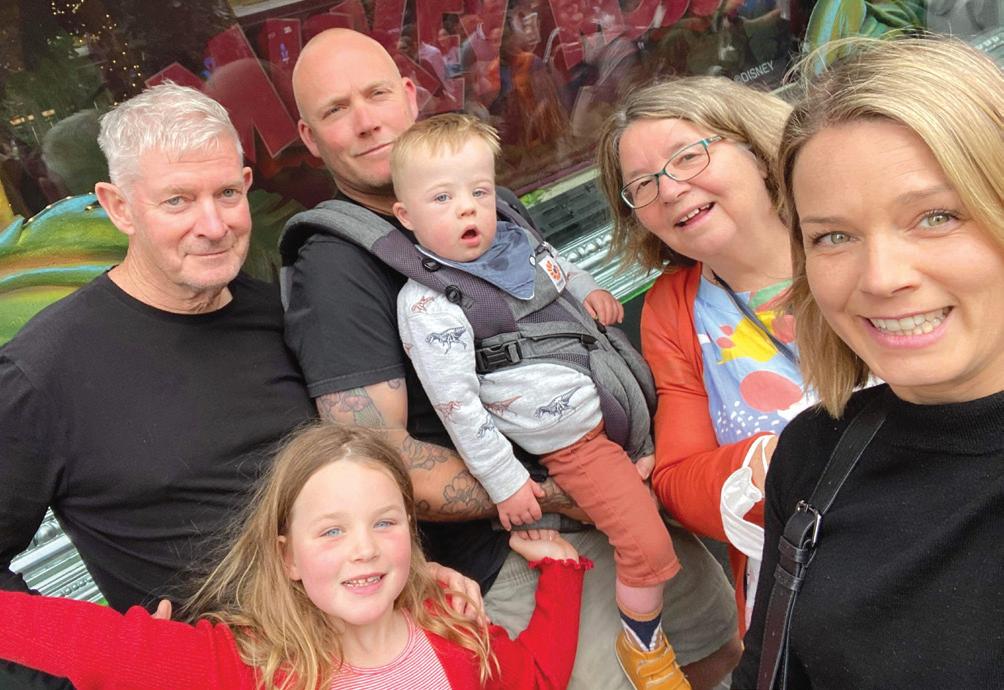
Claire Broadfoot’s family taught values of fairness and social justice.
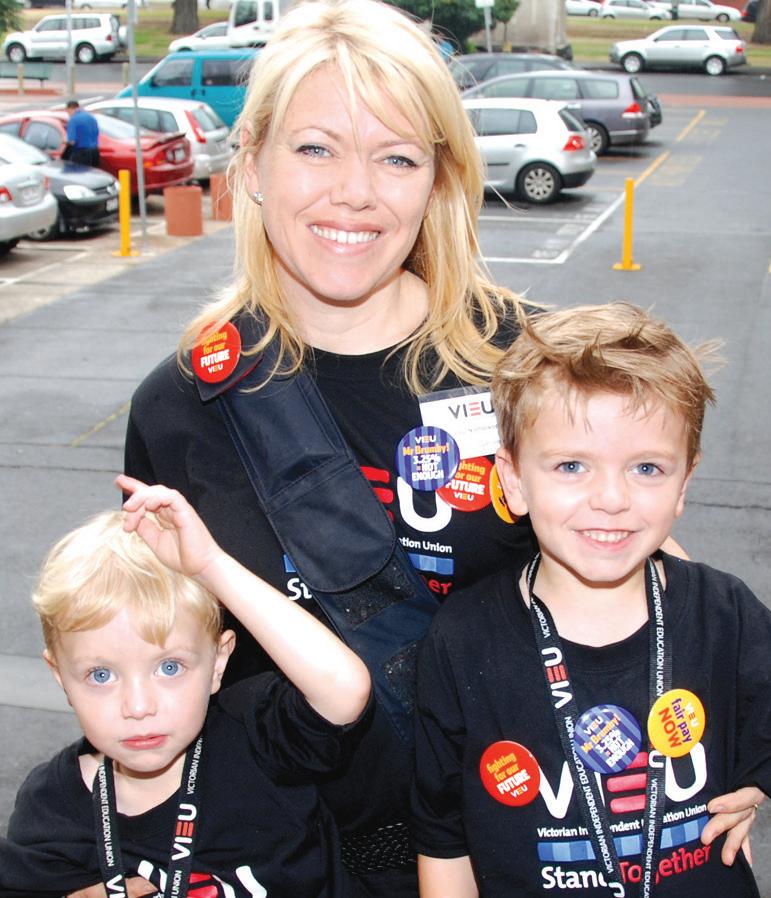

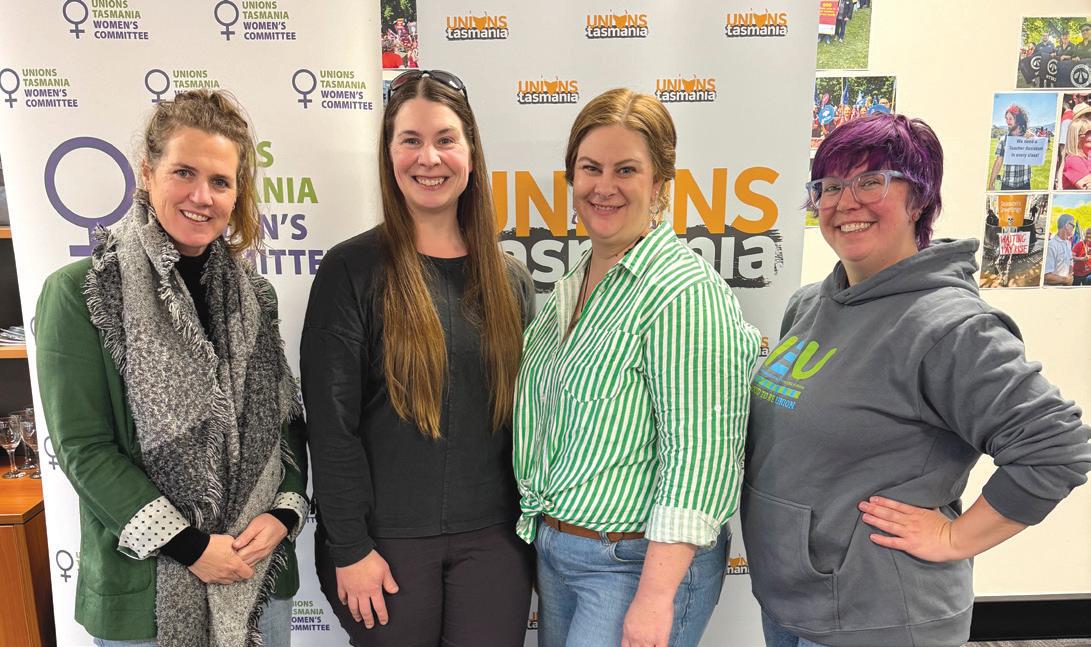
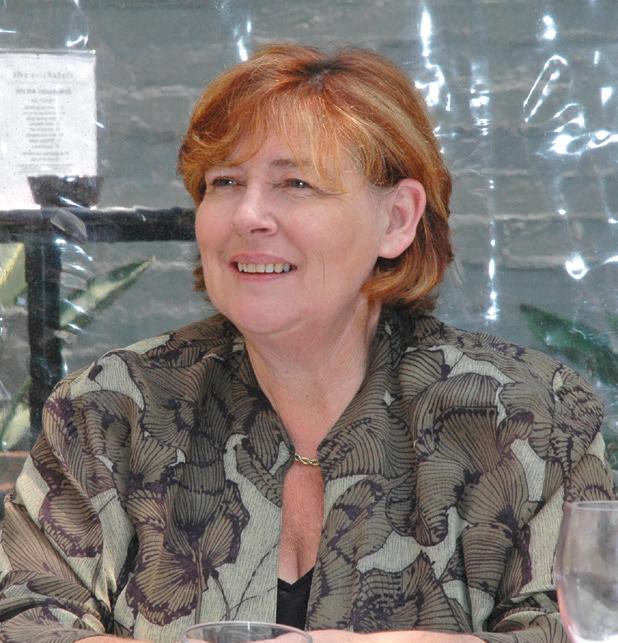
At their best, unions feel like families – built on shared values and common struggles that forge deeper connections, writes Will Brodie.
These connections don’t just shape workplaces; they shape lives. Little wonder then that union values are often inherited.
British researchers Alex Bryson and Rhys Davies found union membership among parents meant their children – especially daughters – were more likely to join a union.
• Having either parent in a union makes young workers 43 per cent more likely to join.
• With both parents unionised, that likelihood rises to 87 per cent.
Once financial reasons are excluded, the value of union membership “can only be fully appreciated through direct experience or the experience of close associates”, Bryson and Davies said in their 2018 study Family, place and the intergenerational transmission of union membership
There is no closer associate than a family member.
Claire Broadfoot: “Stand up for others”
Victorian teacher and IEU member Claire Broadfoot attended teacher strikes and demonstrations as a child in the 1990s.
Her dad Gerard Broadfoot wore his protest t-shirt until it fell apart.
“I recall my parents and their friends (all educators) being pretty unhappy with the then Liberal government’s cost cuts and school closures,” Claire says.
“I grew up in a household where values of fairness and social justice were the cornerstones to conversations and everyday actions.”
“My parents modelled giving everyone a fair go and taught us that it was important to stand up for others.”
Claire’s dad emphasised the importance of joining the union.
“He is a fair and generous man, and when faced with challenging situations in his own career — or as a principal supporting younger teachers — he knew the IEU to be a strong and reliable advocate,” she says.
“He encouraged me to join when I became a teacher, and with the sentiment of my upbringing being ‘we are all in this together’, I didn’t really think twice about it.”
Claire says unions are vital “now, more than ever”.
“Whether it be safe and inclusive schools, fair pay, professional autonomy, protecting work-life balance; it’s all important and it all goes away if we don’t use our voice and our collective power,” she says.
David Coates: “Justice and fairness”
IEU member David Coates teaches at a college in Melbourne’s west. He attended Maritime Union of Australia meetings with his unionist dad in the late 1990s: “I also enjoyed going to the Picnic Day as a family and being in the potato sack race!”
His father said unionism was about “justice and fairness”.
“Dad explained that nothing was given to you in the workplace and everything was earned,” David says.
“I came to understand that much of what we had was thanks to the pay and conditions unionism had secured for Dad.
“Discussions at the dinner table about what was right and wrong in the world were also definitely tinged with the social justice focus of unionism.
“I never considered not being part of the union even when I began stacking shelves at Woolies when I was 15 years old.”
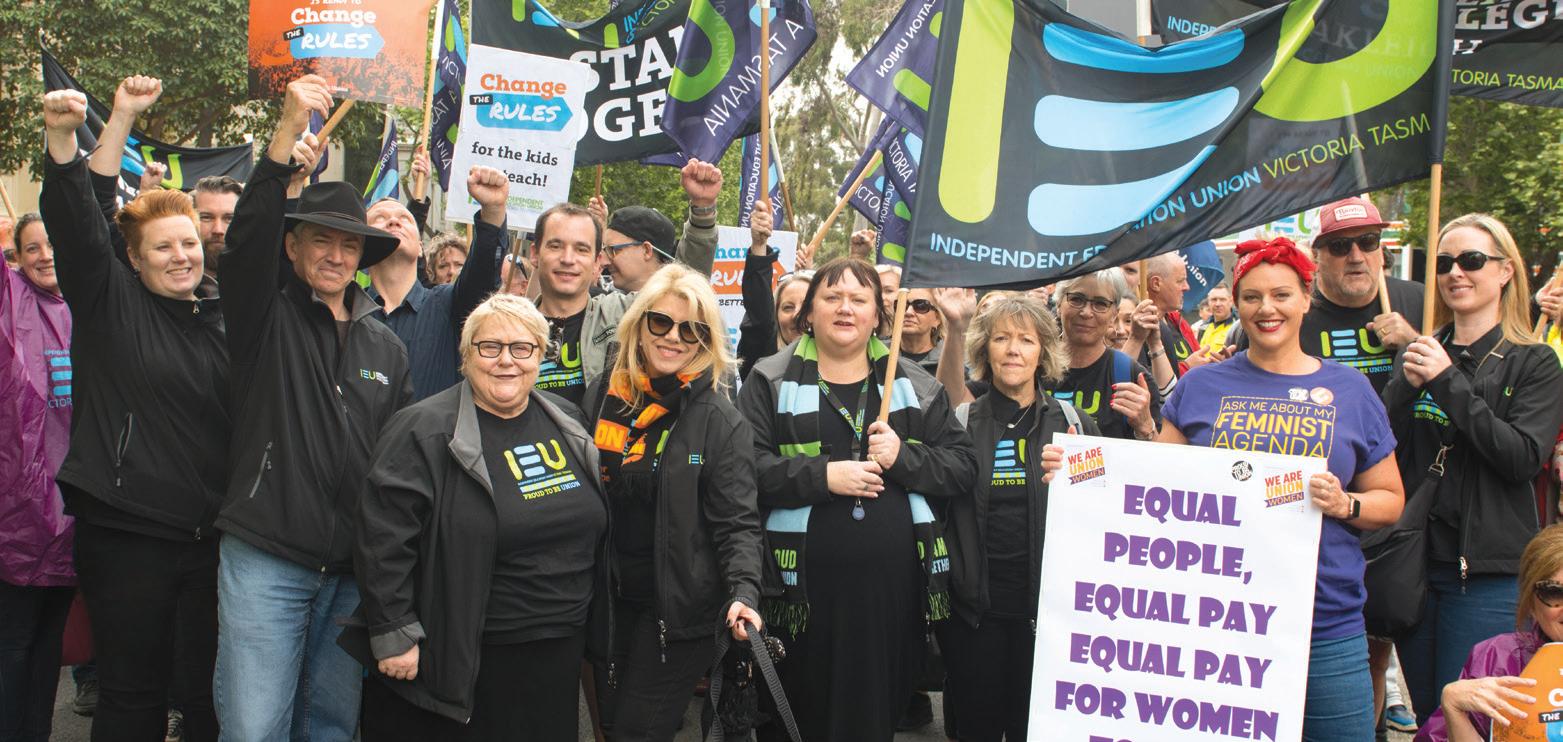
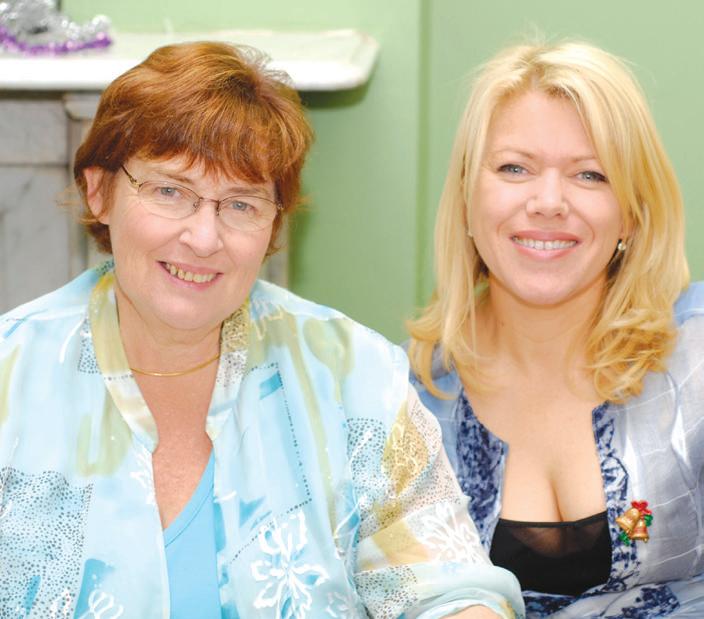
“He knew the IEU to be a strong and reliable advocate.”
David says teaching is a tough job, “so any way you can build a sense of collegiality and togetherness is a good thing”.
Abbey Butler: “Reassert our rights”
Tasmanian-based IEU organiser Abbey Butler was introduced to unionism in the 1980s by her mum Keri Butler, a public sector union member.
“She worked hard to be able to take parental leave when I was born,” Abbey says.
“She fought against sexism in her workplace and for women to have an equal opportunity to access promotions.”
Abbey’s first insight into unionism came in a local factory job, where union membership was mandatory.
“One day, I worked through the lunch bell, thinking I was being helpful – until my union rep told me I was undermining my co-workers’ hard-won right to a break,” she says. “I realised I was making things harder, not easier.”
The extra minutes on the machine were helping the boss, not her colleagues, who had gone on strike to win a paid lunch break.
When Abbey became a teacher, she joined the union, knowing: “We couldn’t win without one another.”
Over time, her view of unionism has broadened: “I’ve become more focused on supporting other unions and their campaigns, not just my own.”
Abbey says our union predecessors would be outraged to see how “we are being ruled by the wealthy”.
“We need to strike back to reassert our rights as humans –and that can only be done together.”
Lou Prichard: “Instilled from birth”
“I don’t recall a time when I didn’t know about unions,” says Victorian IEU organiser and former teacher Lou Prichard. “My family has been involved in the movement for generations.”
Lou’s great-grandfather, Maurice Boyce Duffy, was a longtime union leader who became president of the Victorian Trades Hall Council in 1922 and secretary in 1929.
He laid the final foundation stone of the iconic Trades Hall building in Carlton and recommended fairer taxation for lowincome earners when he worked on royal commissions during the Great Depression.
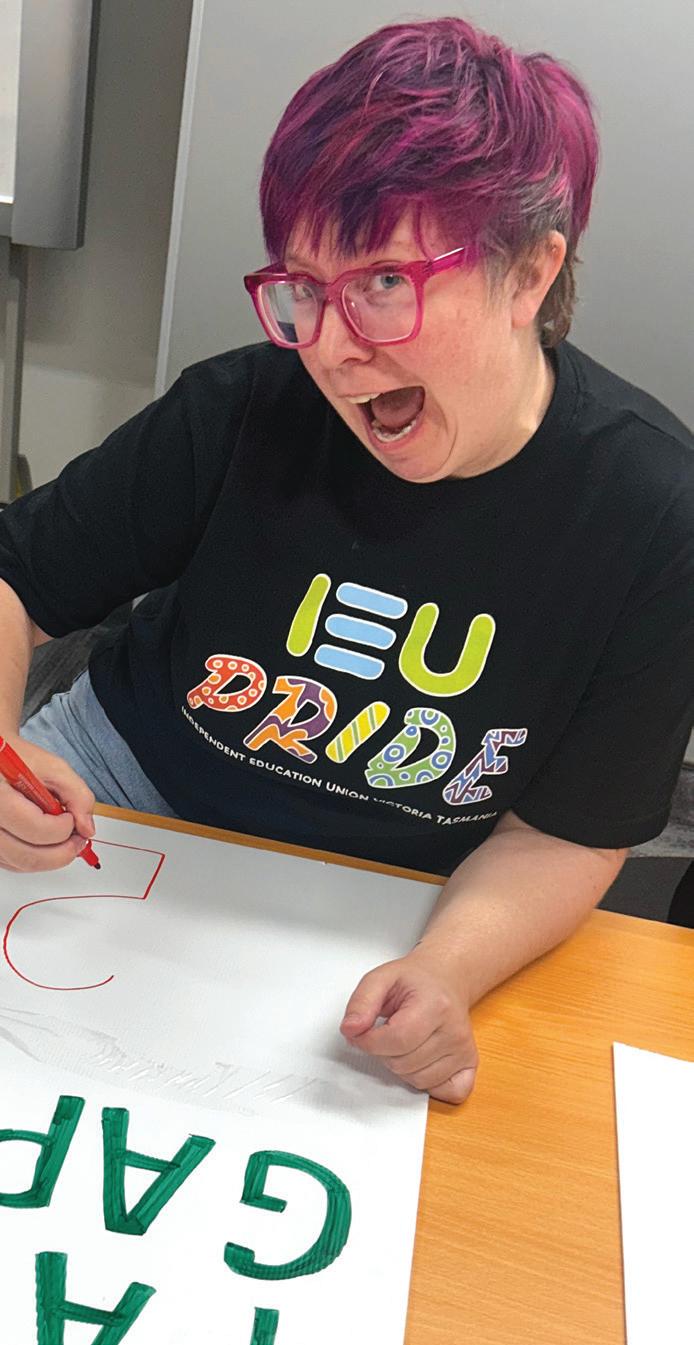
Lou’s mum, Sue Prichard, had union values “instilled from birth”. Both of her parents were activists, and she recalls attending a Gough Whitlam ‘It’s Time’ rally as a toddler in 1972.
Her mum’s mantra was “If not me, then who?”
It guided Sue’s work as a Catholic primary school principal, helping bring the Victorian Catholic Primary Principals Association into the VIEU (now IEU), and work as a much-loved IEU organiser for 23 years.
In recognition of her groundbreaking dedication, the Victoria Tasmania branch named an award after her.
Lou was the union delegate at the local pub during her university years, again while teaching at a Catholic primary school, and has worked as an IEU organiser since 2006.
“My favourite union memory is working together at the IEU with my mum, planning and organising campaigns and rallies bringing together thousands of staff in Catholic education to fight for improvements to their entitlements,” Lou says.
“She was my mother, my best friend, my colleague and my mentor.”
Former IEU Victoria Tasmania General Secretary Deb James says “community, values and commitment” are why the offspring of unionists also join up.
“When those kids start their first jobs – casual shifts at the supermarket, in hospitality and so on – their parents are more likely to encourage them to join the union,” Deb says.
“They’re also more likely to be aware of the pay and conditions their kids should expect and can help spot unfair practices like unpaid overtime.”
Deb says children have always been part of the union.
“Some of them have already been to more union events than many people will attend in a lifetime. IEU kids would come to Council meetings and hang out in the office – they were always welcome.”
Deb says a union can be more than just a group of people fighting for better conditions.
Through shared effort and mutual support, it becomes a community, she says. “In it together. One for all, all for one.”

Historian Liam Byrne tells the human stories of the union movement in his new book.
A few years ago, a local library contacted me to ask if I would accept a donation of books from their collection. It had a number of union histories needing a new home.
I was delighted, of course I will take them. But then I asked why they needed a new home.
“Nobody has borrowed them for quite a few years,” said a despondent librarian.
As a historian of Australia’s union movement, this is a depressingly familiar story.
Much of the union contribution to Australia seems like ancient history, especially to younger people.
I wanted to tell the story of how unions have shaped modern Australia in a relatable, exciting and genuinely informative way.
I wanted to capture the essence of unionism: what it means to join a union, why so many people dedicate their lives to a collective movement, and why organisations formed in the mid-19th century continue to exist.
And I wanted to write a book that would explore these questions in deeply human terms.
This prompted me to write a new history of Australian unionism, No Power Greater: A history of union action in Australia
Ordinary people, extraordinary activists I have been inspired by many wonderful works of union history, but there is often a certain coldness about them, an emphasis on institutional events.
Where are the real human beings in such stories? I decided to do something different. No Power Greater is not about abstract institutions but real people.
It follows the lives of men and women from all levels of the movement, as it seeks to capture the dynamics of how unionism has been lived through time.
Like the story of Jennie George, born in a refugee camp in Europe after World War Two. George joined her union after becoming a teacher in NSW and spent her career challenging sexism in the workplace and union movement, becoming the first woman elected as Australian Council of Trade Unions (ACTU) president in 1995.
Or the story of Bob Hawke, who before he was Prime Minister, was the ACTU Advocate, presenting cases on behalf of the union movement, arguing for pay rises for working people. In this role, Hawke rose to national prominence, setting the scene for his election as ACTU president, which was the springboard for his career in politics.
And the story of Joe McGuinness, a proud Indigenous activist and Waterside Workers’ Federation member.
McGuinness was elected president of the Federal Council for the Advancement of Aborigines and Torres Strait Islanders –the major national First Nations advocacy organisation of his time – and played a leading role in the 1967 referendum.
Union history consists of stories about individual workers coming together and finding a collective power they lack alone.
With this power, they campaigned for and won important rights that changed our nation’s history, improved the quality of life for millions of workers and expanded the bounds of our democracy.
Unions remain relevant to workers because they are driven by a fundamental humanising mission.
This is a mission to assert the rights of working people to be treated as human
beings, not machines or numbers in a computing system.
The earliest unions were industrial organisations formed in the 19th century by skilled, white, male workers, who sought to assert their humanity against the dehumanisation and the commodification of the untrammelled labour market.
This was an era without substantial social protections and industrial regulation.
The primary mechanism for workers to win rights that asserted their humanity was collective industrial action.
These workers frequently complained of being treated as machines or beasts of burden or slaves.
I was really struck by the way unionists articulated these points so consistently throughout this period.
One of the leaders of the eight-hour day campaign by stonemasons in the 1850s, James Galloway gave voice to his fellow masons (who were predominantly British migrants): “We have come 16,000 miles to better our condition, and not to act the mere part of machinery.”
In making such claims, labour was asserting a fundamental humanity against an industrial system that denied it.
This was a radical departure from the industrial and economic orthodoxy of the time; namely, that wages and conditions of work should be determined by “supply and demand” of the labour market.
Unfortunately, the sense that working people are undervalued, their humanity not recognised, remains far too common in 2025.
American historian Barbara H Rosenwein’s concept of an “emotional community” can be applied to unionism – communities bound by common identity and experience and defined through struggle.
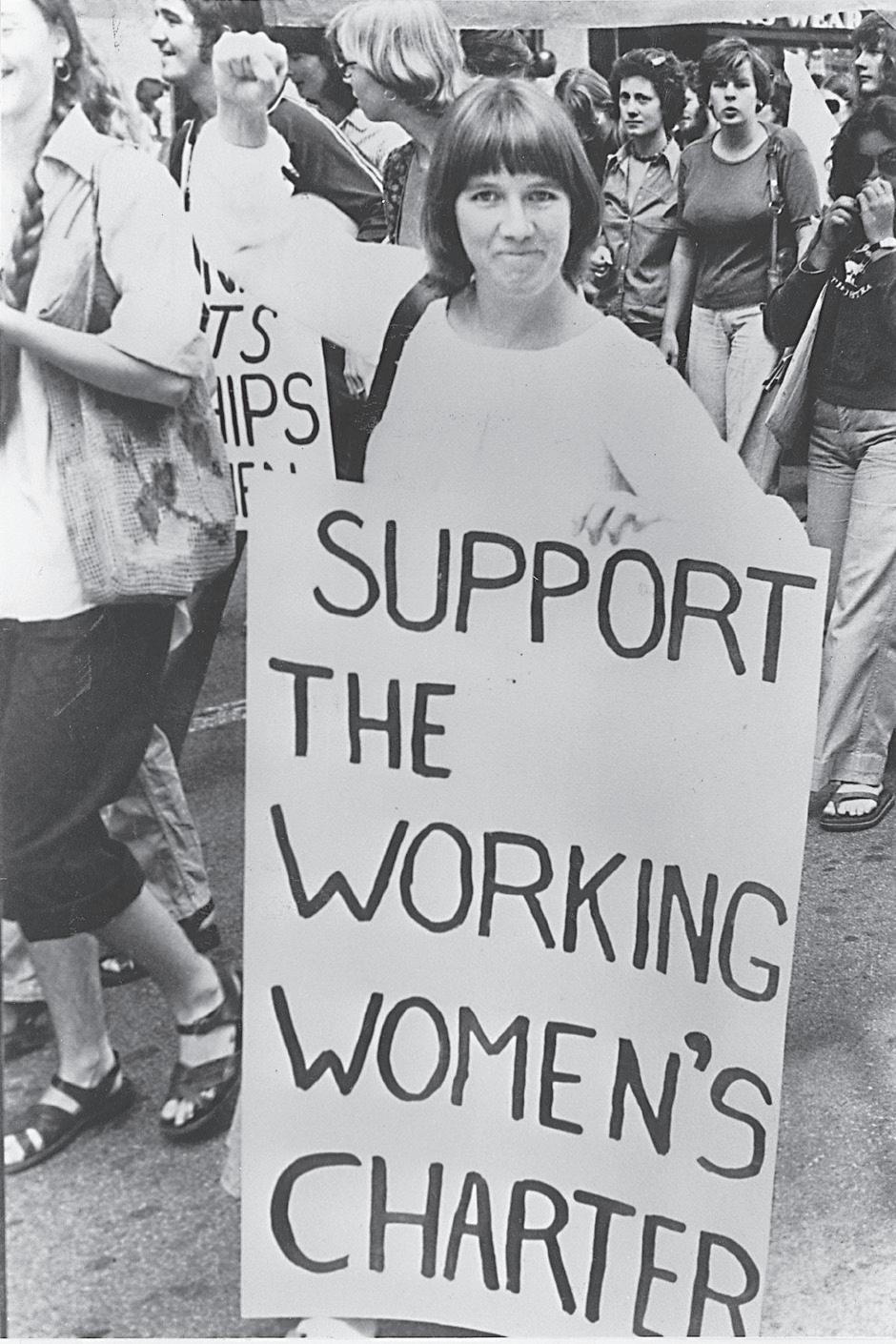



The emotional community of ‘union’ has been defined by who has been included – but also who is excluded.
Unions did not create the racism of British imperial dispossession and racial exclusion, nor the gendered stereotypes of the day, but they often perpetuated these prejudices.
This is a reality of union history that should not be ignored or excused.
I tell the story of how excluded workers took action to challenge discrimination and won their place in the movement. It was important to treat excluded workers not simply as victims, but explore their agency, self-organisation and activism.
No Power Greater brings unionists left out of some historical accounts to the centre of the union story – where they belong.
This includes the Chinese Cabinet Makers’ Union, which spent more than two decades campaigning against racist legislation in the late-19th century and for industrial rights.
Unionists such as Muriel Heagney, who was at the centre of the campaign

for equal pay for six decades, challenged sexism in workplaces and the union movement.
Dexter Daniels, an Aboriginal organiser at the North Australian Workers’ Union who defied his own leadership to support the Gurindji in their walk-off at Wave Hill.
And unionists such as the lesbian and gay activists who became central organisers of the first Gay and Lesbian Mardi Gras in 1978.
It is also the story of unionists who were not from excluded communities but in the spirit of solidarity took practical action in support of their comrades.
I hope No Power Greater inspires a new generation of unionists by making history as real and human as possible: a resource for students of history and those who teach it.
Hopefully, I won’t receive any calls from librarians offering to donate more books anytime soon.
Liam Byrne is a political biographer and historian.


Win a copy
We have a signed copy of Liam Byrne’s No Power Greater: A history of union action in Australia to give away. To enter, email giveaways@ieu.asn.au with the book’s title in the subject line by Thursday 4 December, and your postal address and membership number in the body of the email.
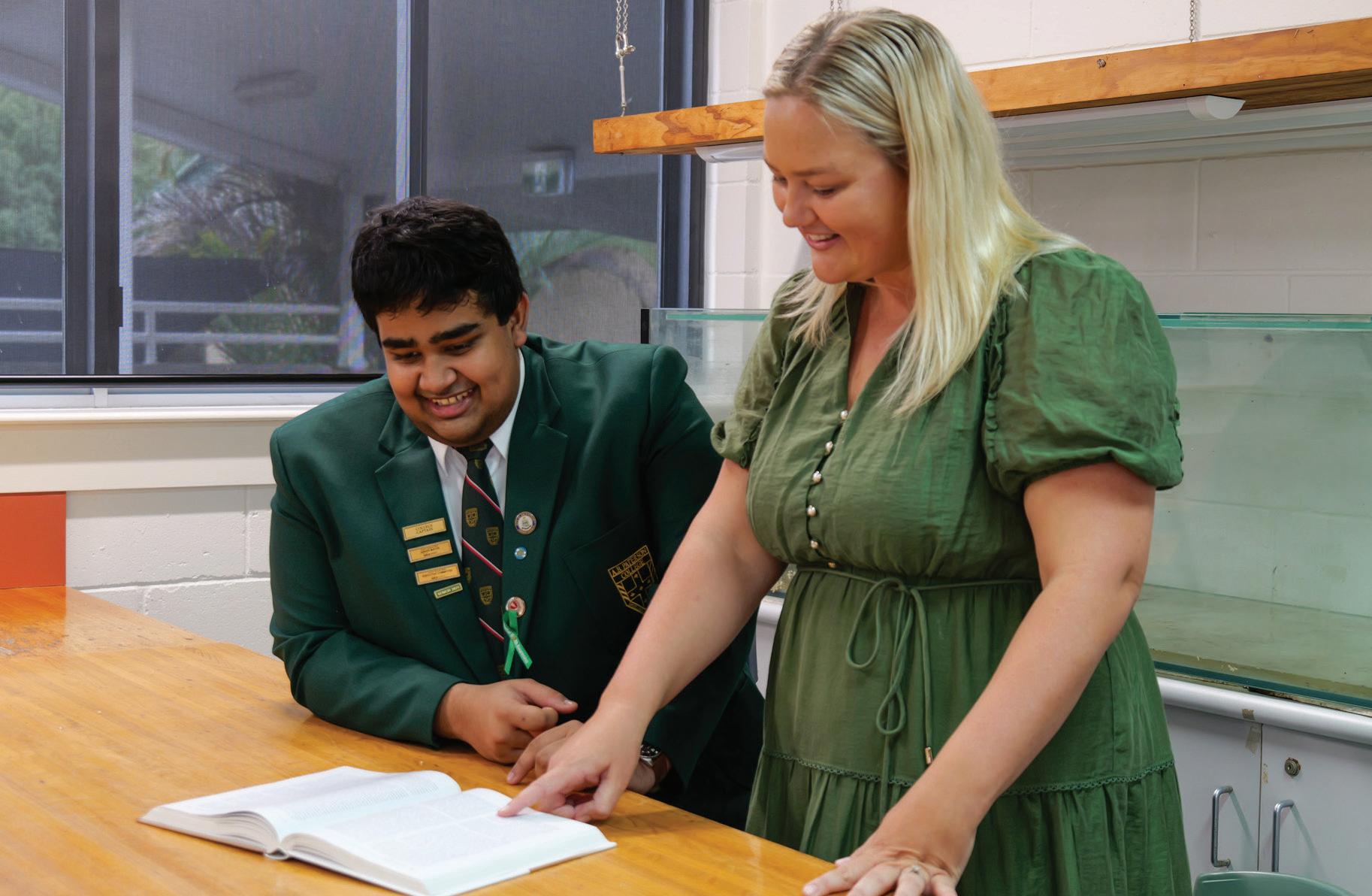
Award-winning early career teacher Kiana Sloane shares her method for engaging students with STEM subjects, writes Emily Campbell.
High school students might have little in common with sharks and other marine life, but Kiana Sloane uses many of the skills she developed as a wildlife keeper to teach science and maths.
“Any time I can bridge the classroom with the real world I do,” she says.
“I enjoy bringing my past careers into the classroom and embedding real-world contexts into assessment and learning experiences.”
A teacher at A.B. Paterson College on the Gold Coast, Kiana won a TeachX Award at last year’s Queensland College of Teachers’ annual World Teachers Day celebrations.
In contrast, research from the Australian Catholic University (ACU) found 85 per cent of science, technology, engineering and mathematics (STEM) education in Australian schools is based on a “products and processes” approach dominated by robotics and coding.
The research calls for STEM education to be better aligned with real-world problems and young people’s desires to advocate for positive change.
Despite these claims, it is clear countless IEU members are already teaching engaging, world-class STEM lessons in schools that go beyond robotics and coding.
“Giving students the skills to think critically, problem-solve and adapt is essential.”
The Learning contexts and visions for STEM in schools study found STEM education often lacks real-world relevance and meaningful connections to students’ lives.
An IEU member, Kiana shares what makes high-quality STEM education and how she keeps content relevant and engaging for students.
Swapping wildlife for whiteboards
Kiana made a mid-career change to the teaching profession following a career working in science and with animals at Paradise Country wildlife park.
“I initially completed a Bachelor of Science majoring in marine biology, before working as a wildlife keeper,” she says.
“After a few years I then worked at Sea World as a member of the marine science team, which involved conducting educational talks and taking guests on animal experiences and tours.
“The job involved a lot of presentations and guest interaction, but I was also caring for marine species including sharks, rays and fish.”
Community education was a substantial part of these roles, which gave Kiana the opportunity to hone skills she now uses as a classroom teacher.
Kiana developed a love of spending time with school students, teaching them about conservation and the beautiful animals she felt fortunate to work with.
“I got to see students’ bright minds and noticed how much they cared for the planet, so decided to follow my passion for teaching where I could make a real impact and difference in the world,” she says.
Shaping the future
Now in her fourth year of employment at A.B. Paterson College on the Gold Coast, which she previously attended as a student, Kiana is glad she made the switch.
Kiana teaches mathematics, science and marine science across multiple secondary year levels. She is a strong believer that STEM education opens doors.
“Most jobs being created now and into the future are STEMrelated, so giving students the skills to think critically, problemsolve and adapt is essential,” she says.
“STEM subjects aren’t just about content – they’re about helping students become curious, innovative thinkers who can shape the future.”
ACU education associate professor Mellita Jones says academic research shows STEM teaching and learning often lacks a link to authentic contexts or has little relevance to students’ lives.
“The world is facing so many STEM-related crises and STEM is increasingly being called upon to examine and present solutions,” she says.
A co-author of the report, ACU maths education professor Vince Geiger, says such an approach to STEM is vital to give students the skills and knowledge to be active and informed citizens.
“We need informed and responsible critical thinking and action on significant local and global issues including environmental crises and disruptions like pandemics,” he says.
“The reality is students want to engage with significant issues and should be supported to act on and call upon others to join them to address critical real-world concerns and inspire positive change.
“Students are very much aware that these changes are needed for the world they will inherit – it is already their problem.”
Kiana says STEM subjects become meaningful to students when it connects to their lives.
For a maths assessment on geometry focused on area, perimeter and volume, Kiana asked students to design a polar bear enclosure.
“I then reached out to Sea World and they filmed a video showcasing their actual exhibit,” Kiana says.
“My students were so excited to see a tangible connection to the task, and it made the assessment much more engaging.”
Kiana says high-quality STEM education is hands-on, student-led and grounded in real-world challenges.
“It’s not just about content delivery – it’s about sparking curiosity, encouraging problem-solving and helping students develop the confidence to ask questions and find solutions,” she says.
“Real-world opportunities and projects help students see the purpose behind what they’re learning.
“When students can see that what they’re learning has relevance outside the classroom, that’s when true learning happens.”
Besides teaching, Kiana also helped establish a Sustainability Club where older students mentor younger peers, build

teaching.
leadership skills and foster environmental stewardship.
Under her guidance, the Club has launched projects such as a recycling program in partnership with the Nerang Express Recycling Centre, which funnels funds to a Tanzanian school.
Other activities led by Kiana include a ‘Naked Food Lunch’ initiative to encourage students to bring plastic-free lunches and a second-hand book exchange to promote sustainability and resourcefulness.
Kiana also partnered the school with the EcoMarines Foundation, an educational initiative that immerses students in real-world environmental challenges.
Through this program, she assists students to devise solutions to challenges, fosters peer education and connects them with community resources.
Annual excursions, such as the EcoMarines Ambassador training at Tangalooma Island Resort and the international Global Link Competition, further enrich students’ learning experiences.
Making a difference
Kiana feels strongly about getting more girls involved in STEM subjects and pursuing STEM careers.
“I think it’s powerful when students see teachers – especially women – who’ve had careers outside the classroom in STEM fields, because it helps girls visualise themselves in those roles too,” she says.
“Representation matters, and so does relevance.”
Kiana says teachers are important in shaping young people’s lives.
“I genuinely wake up happy to go to work,” she says.
“I absolutely love teaching and can’t see myself ever falling out of love with it.”
More information
Read the study: bit.ly/4n7t4np

Teachers could be at risk of harm if they have to compromise their professional values, writes Will Brodie.
The teacher workforce crisis shows no sign of abating as unsustainable workloads, stress and burnout prompt school staff to leave the profession.
But new research by Glenys Oberg suggests some teachers may also leave the profession due to moral injury.
A PhD candidate in education and trauma at the University of Queensland, Oberg says that if we want to keep teachers in classrooms, “we need to do more than lighten their workloads.
“We need to make sure they are no longer placed in positions where doing their job means going against their professional values,” she wrote in ‘It feels like I am being forced to harm a child’: research shows how teachers are suffering moral injury, published in The Conversation
“This means teachers need to feel heard, respected and empowered in classrooms and schools.”
Psychiatrist Jonathan Shay coined the term moral injury while working with Vietnam War veterans, defining it as a “betrayal of what’s right by someone in authority in a high-stakes situation”.
Shay found some veterans experienced not just post-traumatic stress disorder, but deep moral anguish when forced to act against their values.
The term is now applied to teachers, leaders and support staff who suffer “intense psychological distress” when they are forced to compromise their ethical or professional standards.
Oberg says rigid disciplinary policies, high stakes testing regimes and chronic underfunding “often force teachers to act in ways that contradict their professional judgement”.
“This can lead to frustration, guilt and professional disillusionment,” she says.
Act against values
Moral injury occurs when teachers and school staff:
• implement or enforce policies that conflict with personal values
• cannot prevent harm to students
• face ethical dilemmas related to educational equity.
American mental health and education expert Jen Leland says moral injury is exemplified by the following dilemma: “If I do what is effective in my classroom, I might lose my job; if I prioritise my job, I fail my students to whom I am deeply committed.”
Oberg’s research on moral injury drew on dozens of in-depth interviews with teachers, finding “emotionally charged accounts of being put in impossible situations at work”.
Teachers reported they had to enforce school or departmental policies they believed were harmful, such as: “The policy says I should suspend a student for attendance issues, but their home life is falling apart. How does that help? It feels like I’m being forced to harm a child instead of helping them.”
Oberg says old attitudes about teaching die hard, including the notion that teaching is a calling – and therefore requires endless sacrifice.
Oberg says teachers must be “actively involved in shaping decisions that affect their daily work — not just consulted as an afterthought”.
Oberg’s research calls for systemic reforms, including “trauma-informed practices, equitable resource distribution and growth-based assessment models”.
“Professional development programs focusing on ethical decision-making and resilience-building are also recommended to equip teachers to navigate these challenges,” she says.
Oberg describes moral injury as a “systemic rather than an individual issue” and calls on educational stakeholders
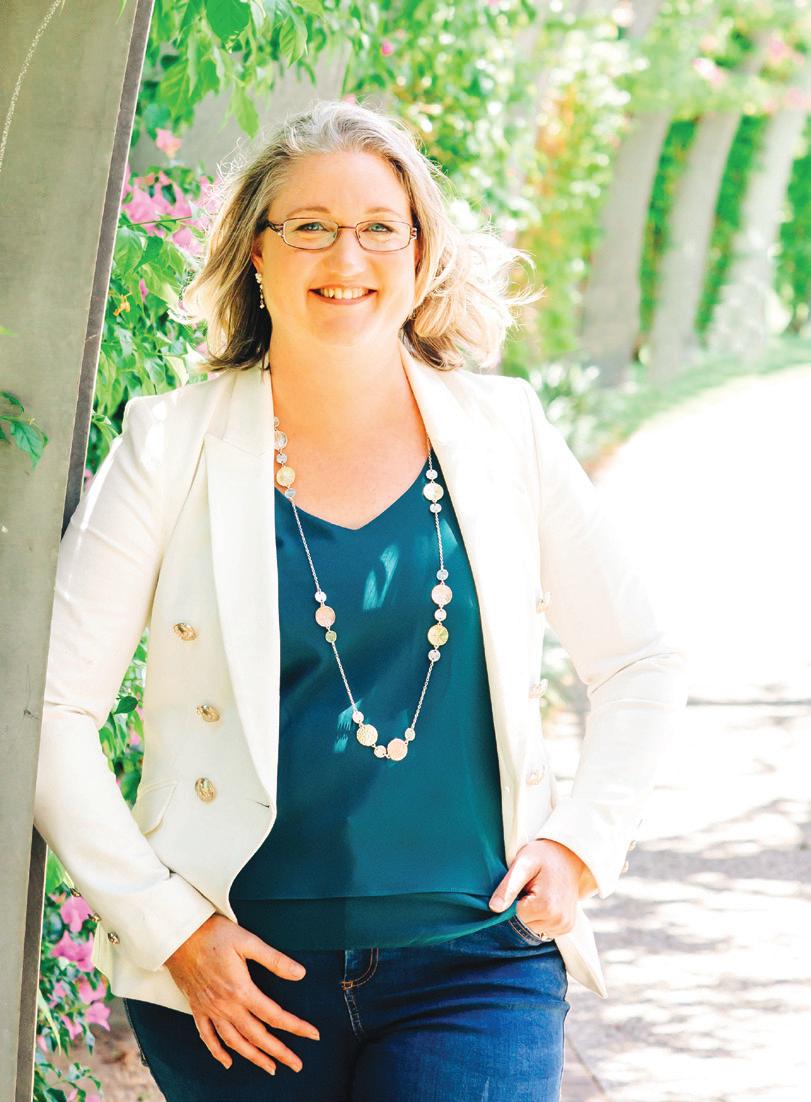
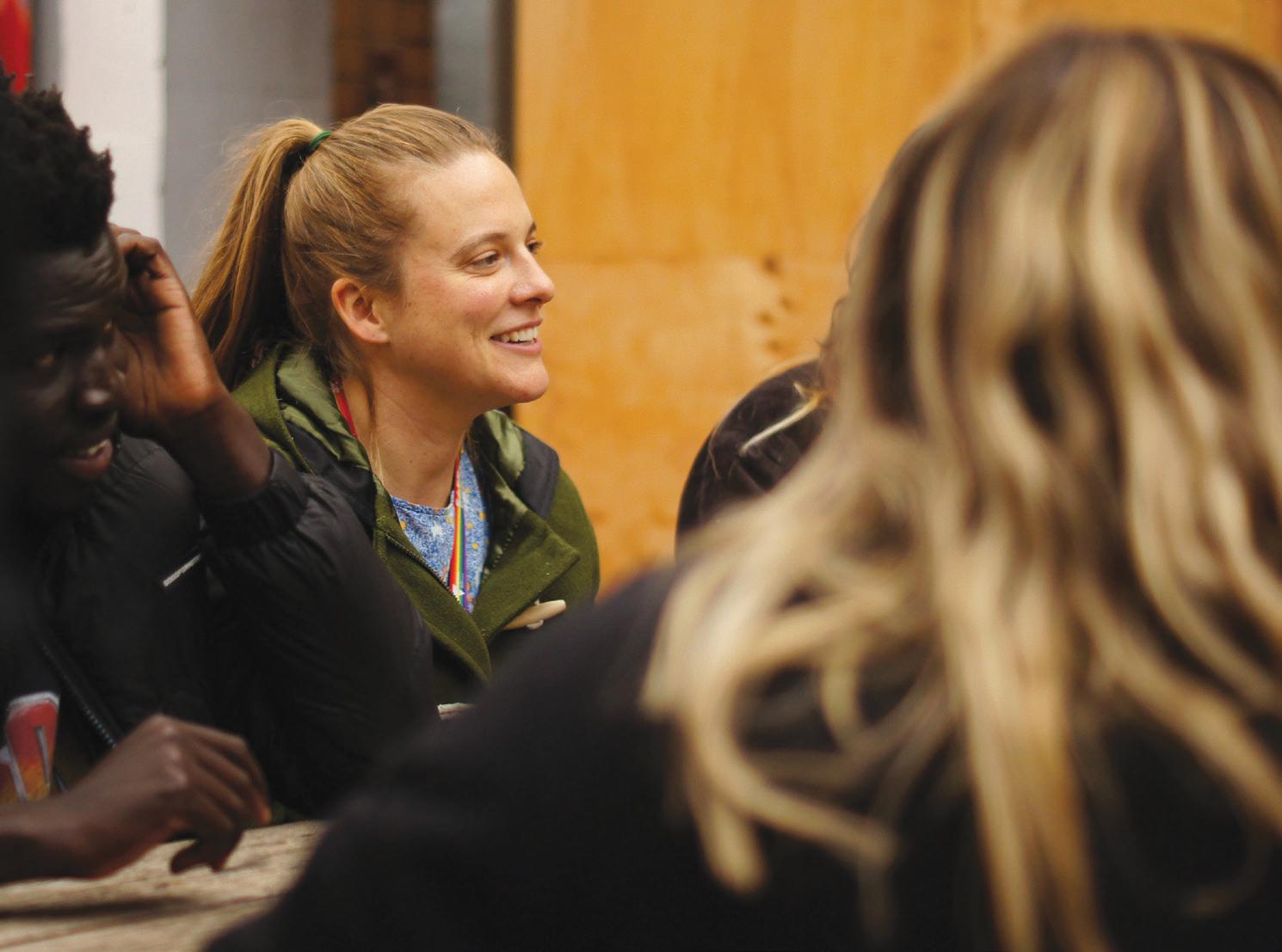
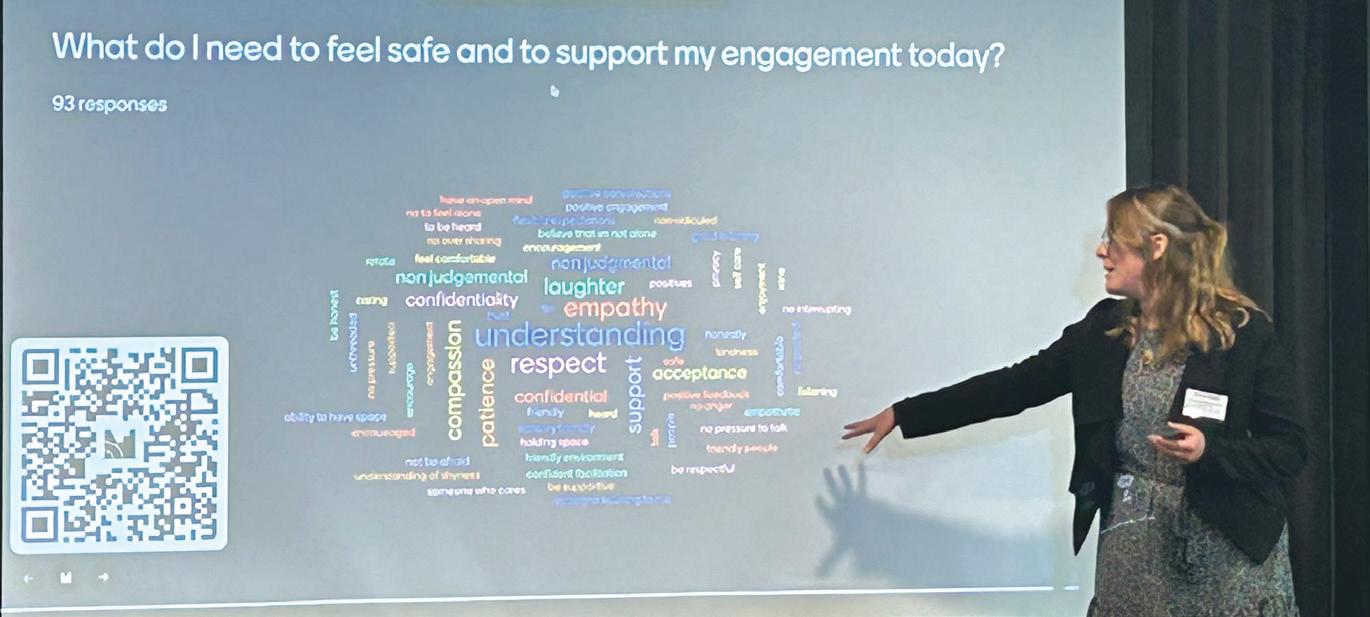
to foster supportive environments that sustain teacher wellbeing.
Former teacher and Wagtail Institute founder Megan Corcoran says many teachers instinctively adopt a traumainformed approach, believing students do well when they can and separating behaviour from the person.
But policies and procedures often pull them in the opposite direction.
“That’s where moral injury happens,” she says.
Trauma-informed principles that should be embedded in schools include:
• safety
• trustworthiness and transparency
• mutuality and collaboration
• empowerment, voice and choice
• peer support
• cultural, gender and historical humility.
Corcoran says this work is not easy: “Schools have competing priorities, are often under-resourced and teachers’ workloads are at an all-time high.”
However, she says “it’s not fair or effective” to leave this work to individuals – leadership and whole-school systems must lead the way.
And they can do it by listening to staff.
“Betrayal of what’s right by someone in authority in a highstakes situation.”
“Teachers are the experts of their experiences,” she says. “They know what’s happening in classrooms, what feels right and what could be improved.”
Corcoran suggests applying the trauma-informed principles of empowerment, voice and choice by actively listening to teachers and recognising them as experts.
“Trauma-informed environments aren’t top-down; they promote autonomy, build confidence and amplify strengths rather than deficits,” she says.
Oberg says schools that prioritise teacher voice in policy design, or move away from purely punitive models, have better staff morale and ethical alignment.
“It’s also about pushing for systemic changes: fairer workloads, realistic expectations, proper resourcing and genuine leadership accountability,” she says.
“Creating spaces where teachers can openly discuss the ethical tensions and challenges they face without fear of judgement or repercussions is also really important.”
Corcoran recommends practices such as consistent routines, effective social and
emotional learning, brain breaks and restorative practices that help all students feel safe and supported.
Corcoran highlights the value of connecting with like-minded teachers through communities of practice to share challenges, celebrate wins and improve school environments.
She encourages teachers to seek out mentors, colleagues or broader networks for support and validation.
“Know that you’re not alone in wanting more for this profession,” Corcoran says. “It might be seeking a mentor, seeking a colleague or school or jumping into a broader community where you can talk about your experiences and have them validated.”
Glenys Oberg’s article: bit.ly/4p7YSu2 Megan Corcoran’s trauma-informed advice for educators: wagtailinstitute.com

Schools need better systems for students exposed to family and domestic violence, writes Emily Campbell.
Children exposed to family and domestic violence (FDV) are victim-survivors in their own right – not merely witnesses, bystanders, or extensions of the adult victim-survivors in their household.
As the place where they spend the most time outside of home, schools are in a critical position to support students in these situations.
New research finds Australian schools need comprehensive support systems to address the learning and safety needs of children experiencing FDV.
The report, Examining the Impact of Domestic and Family Violence on Young Australians’ School-Level Education, highlights the need to equip schools to intervene earlier to prevent future harm and better support students’ unique needs.
A co-author of the report, Monash University professor Kate Fitz-Gibbon, says there are significant differences across Australia in how schools identify and respond to student disclosures of family violence.
“This inconsistency exists between jurisdictions and also within individual school communities, depending on who the young victim-survivor tells,” she says.
“It is largely due to a lack of national and state-based guidance and limited training that prioritises student safety and wellbeing in the context of family violence.”
The research examined a sample of survey responses from more than 1600 Australians as part of the 2022 Adolescent Family Violence in Australia national survey.
Respondents who reported experiencing FDV during their school years described either being directly subjected to violence or witnessing violence between other family members.
Researchers found less than one-in-five students reported disclosing their experience of FDV to someone in their school community, with many instead skipping school or becoming fearful of school authority figures.
Some students who proactively disclosed reported feeling reassured and supported when staff listened nonjudgementally, validated their feelings and took action to help.
Others who disclosed reported feeling dismissed or not taken seriously, which compounded their trauma.
Fitz-Gibbon says schools must move beyond the current ad hoc responses and instead adopt a whole-of-school approach.
“To ensure consistent and effective responses, we urgently need a national approach that embeds trauma-informed, developmentally appropriate responses into school policy and practice,” she says.
“This requires resourcing of comprehensive staff training, clear referral pathways and accountability mechanisms to
support children who disclose their experience of FDV while at school.
“Schools should be supported to provide trauma and FDVinformed training to all school staff, so they feel confident to respond appropriately to disclosures from students.
“There is also a need for clear pathways to refer students to appropriate external supports and to build collaborative partnerships between schools and specialist FDV services.”
Disengaged from education
The report shared many heartbreaking examples of the complex and intersecting ways that FDV had an impact on students’ participation and achievement in school, affecting aspects from friendships and extracurricular activities to academics and attendance.
Young victim-survivors commonly reported high levels of absenteeism, skipping classes regularly or dropping out altogether.
A smaller number of respondents reported ”throwing themselves” into their studies, identifying school as a place they could temporarily escape the troubling circumstances at home.
Some respondents cited difficulties with studying and completing homework due to high conflict environments, parental interference, loss of motivation, an inability to concentrate or being denied access to the internet and learning resources.
Fitz-Gibbon says some students who report FDV were suspended, ignored or labelled ”troublemakers”.
“Too often, children experiencing violence in the family home are misunderstood, punished or pushed out of the education system,” she says.
Fitz-Gibbon says the cost of inaction is profound, with longterm detrimental impacts on the academic engagement of students, their mental health and wellbeing.
All education settings can benefit by becoming traumainformed, knowing the resources available and where to refer children and families for professional help.
In terms of best practice for responding to student disclosures, Fitz-Gibbon says teachers do not need to have all the answers but need to know how to respond supportively and where to refer.
“Best practice starts with believing the student, responding calmly and non-judgementally and ensuring the child’s safety is prioritised,” she says.
“Mandatory reporting requirements must be complemented by a relational, child-centred response.”
Adapt and accommodate
The research provides robust evidence on measures to ensure young victim-survivors can access early interventions and safety supports at school.
Fitz-Gibbon says schools must be adaptable and accommodating to help affected students remain engaged in education.
“This means creating safe environments, offering flexible attendance and learning options, investing in staff training and providing access to onsite or partnered support services,” she says.
“These adjustments aren’t ‘extras’; they are essential for students experiencing FDV to remain engaged in education.”
Some schools are demonstrating leadership by embedding tiered models of trauma-informed support, building close relationships with specialist services and adapting attendance and learning policies to better support students. However, such examples remain the exception, not the norm.
“The experiences of young people in our study demonstrate why flexible attendance and academic policies for students impacted by FDV would be beneficial,” Fitz-Gibbon says.
Research conducted by Fitz-Gibbon for South Australia’s Royal Commission into Domestic, Family and Sexual Violence reveals that parents who perpetrate FDV against children
through coercive control often do so under the guise of parental discipline.
Fitz-Gibbon says the experiences of young victim-survivors highlight the need to better engage families and communities to change understandings of discipline, particularly through culturally responsive, trauma-informed approaches to educating.
“We must develop deeper understandings of coercive and controlling behaviours as they are experienced by children and young people in families,” she says.
“Without such awareness, there is a risk that controlling behaviour will continue to be minimised as ‘strict parenting’ or young people’s disclosures will be dismissed.”
It is unclear whether current respectful relationships and consent education programs in schools effectively address family and domestic violence (FDV) or adequately equip children to recognise abuse in the home from a young age.
Content focuses on intersecting topics like gender stereotypes, power dynamics, sexual violence, misogyny and much more in the context of peer and romantic relationships.
However, there are concerns that students are ill-equipped to explicitly identify different forms of FDV or differentiate between what is reasonable parental/caregiver behaviour or discipline versus abuse.
A National Respectful Relationships Education Expert Working Group was established in 2023 to provide advice to the federal Education Department on how to support delivery of consent and respectful relationships education programs in schools.
“Too often, children experiencing violence in the family home are misunderstood, punished or pushed out of the education system.”
The federal government also committed $77 million last year for states and territories, with jurisdictions and the nongovernment school sector to decide how to invest the funding to best meet local needs.
Fitz-Gibbon says the Respectful Relationships program is a vital prevention tool.
“However, it must continue to evolve to reflect children’s lived realities,” she says.
“Many current programs focus on peer relationships and intimate partner dating dynamics but say little about FDV in the home.
“We need curricula that help children name and seek help for abuse in all contexts and settings.”
References
Fitz-Gibbon, K., Meyer, S., Maher, J., & Roberts, S. (2022).
Adolescent family violence in Australia: A national study of prevalence, history of childhood victimisation and impacts. ANROWS. bit.ly/45VpW8l
Stewart, R., Fitz-Gibbon, K. and Roberts, S. (2025).
Examining the Impact of Domestic and Family Violence on Young Australians’ School-Level Education. Aust J Soc Issues. bit.ly/4gdrv4Z
Professional standards for teachers do not recognise a vital aspect of the profession – their dedication to students, write Graham Hendry and Sofia Kesidou.
We love teachers and school principals who care deeply about helping students to reach their full potential. Teachers enter their profession driven by a moral purpose “to make a difference” (Cameron & Lovett, 2015).
As a society we should, at the very least, do nothing to diminish teachers’ commitment to nurturing the welfare and growth of students.
Yet recent research suggests that teachers’ commitment may not be adequately recognised in published professional standards.
Dedication matters
There is good evidence that teacher dedication to their practice makes a meaningful difference in young people’s lives. An English study of more than 300 teachers across a variety of school contexts shows that teachers who are “sustaining or continuing to build their commitment [are] more likely to attain [student progress] results at or above the level expected, regardless of school context” (Day, 2008).

Teachers who are supported in sustaining their commitment to students are also the most satisfied in their work (Cameron & Lovett, 2015).
These findings are reinforced by a review of more than 1000 studies on the professional qualities of teachers. The review identified 44 distinct qualities and found that “motivation/commitment” was the eighth most researched quality (Cotton et al., 2025).
Other highly researched qualities were, in order, knowledge of teaching practice; collaboration and relationship building; knowledge of content; values and attitudes; communication; self-discipline; respect for difference and diversity; social and emotional intelligence; and knowledge of behaviour management.
What authorities value
The research raises a vital question: to what extent is teachers’ commitment (and other important qualities) acknowledged and valued in the Australian Institute for Teaching and School Leadership (AITSL) teacher professional standards? The AITSL standards are used by accreditation authorities to accredit teachers.
To answer our question, we grouped all 44 qualities into seven broad categories
that allowed us to effectively compare them to the professional standards and their 148 descriptors.
Our categories included thinking skills; content knowledge; desire to teach (which included the qualities of motivation/commitment, curiosity and persistence); moral virtue; knowledge and skills for how to teach; social ability; and self-belief.
We then systematically matched the categories of qualities to all standards descriptors across teachers’ four career stages (graduate, proficient, highly accomplished, and lead). For a match, the quality and descriptor had either clear similarity (they referred to the same things using the same or similar terms) or were clearly logically connected.
Teachers do not feel valued
We found many matches between our categories of qualities and the standards descriptors, and for some descriptors we found matches with more than one category of qualities.
Taken together, the categories ‘knowledge and skills for how to teach’ and ‘social ability’ (which encompassed 45 per cent of all the qualities) accounted for 85 per cent of matches with the 148 standards descriptors (some descriptors

were matched to both categories).
However, we could not match any of the qualities in the ‘desire to teach’ category to corresponding descriptors. We could only make indirect connections with descriptors about professional learning.
But teachers are motivated to teach and are committed to caring for their students, while also having a desire to learn about new pedagogical practices and resources for teaching when the occasion arises. They persist in helping students in the face of setbacks.
This means that teachers may feel they are not valued by accreditation authorities for their dedication and devotion to students, only their desire to keep learning.
There is already compelling evidence that teachers do not feel valued, in a general sense, by authorities or policymakers.
An international survey of teachers in 28 countries including Australia found only 13 per cent felt valued by policymakers, and only 22 per cent felt they were able to influence policymaking (Akiba et al., 2023).
As Akiba et al. state, “these numbers are disconcerting and require attention”.
Sustaining commitment
Recognising all the qualities of teachers, including their desire to teach, in the AITSL professional standards could contribute to teachers feeling more valued and encourage authorities and school principals to support teachers in sustaining or continuing to build their commitment.
But support provided by authorities would need to be well-founded on the same moral virtues related to right and wrong conduct, such as concern for others, that are expected of teachers and principals.
A significant risk is that if they were not, any initiatives could have an opposite effect, creating mistrust or even weakening teachers’ commitment.
Skipper (2018) even ventures to argue that bureaucracy, designed as it is for impartiality, efficiency and following rules, is dehumanising and at odds with teachers’ humanising, socially and emotionally intelligent practice in nurturing students.
“Teachers’ dedication to their practice makes a significant difference in young people’s lives.”
A search of one Australian state’s guide about ethical behaviour for government sector employees found, for example, no mention of the terms caring, concern for others or wellbeing.
In contrast, Cameron and Lovett’s (2015) research shows teachers’ commitment and wellbeing is sustained and enhanced by school principals who
foster teachers’ self-belief, agency and a strong collaborative school culture.
Our political leaders, authorities and media should do the same – and support our teachers in their commitment to making a difference in the lives of all young people.
Dr Graham Hendry and Associate Professor Sofia Kesidou are from the University of Sydney’s Centre for Educational Measurement and Assessment.
Akiba, M., Byun, S., Jiang, X., Kim, K., & Moran, A. J. (2023). Do teachers feel valued in society? Occupational value of the teaching profession in OECD countries. AERA Open, 9(1), 1-21.
Cameron, M., & Lovett, S. (2015). Sustaining the commitment and realising the potential of highly promising teachers. Teachers and Teaching, 21(2), 150-163.
Cotton, W., Peralta, L., Simpson, A., White, R., Harb, G., Hart, N., Hendry, G., Karimullah, M. A., Lawson-Jones, A., Maher, D., Preston, C., Rowley, J., & Tognolini, J. (2025). Building understanding of teacher quality: A scoping review. In R. White & A. Simpson (Eds.), What’s the evidence? An investigation into teacher quality (pp. 2641). Routledge.
Day, C. (2008). Committed for life? Variations in teachers’ work, lives and effectiveness. Journal of Educational Change, 9, 243-260.
Skipper, R. B. (2018). Education and bureaucracy. International Journal of Applied Philosophy, 32(1), 57-76.
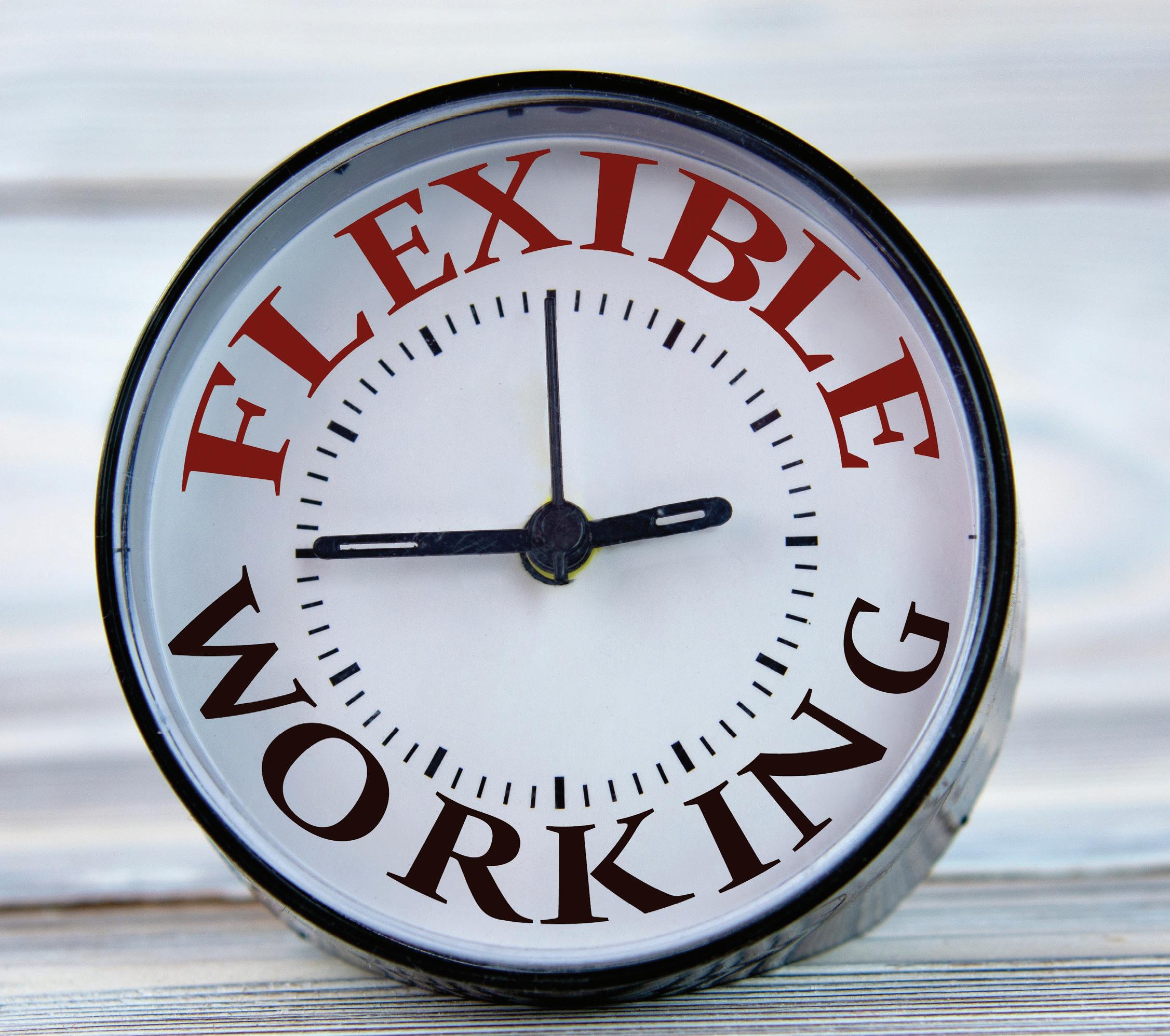
Flexibility should allow employees to manage work to meet their own needs – not lead to precarious, poorly paid jobs, writes Andrew Taylor.
Type the word “flexibility” into Google and the internet search engine will probably provide an image of someone practising yoga in an idyllic landscape.
However, the picture in Australian workplaces is far less attractive, with inflexibility a key driver of ongoing gender inequalities and economic insecurities.
A professor of gender, work and employment relations at the University of Sydney, Rae Cooper says “bad flex” – a one-sided, employer-oriented form of flexibility that does not meet the needs of workers – flourishes in Australia.
And women are particularly affected by these inflexible workplaces that force them to relinquish high-quality jobs and take up insecure, poorly paid work.
Juggling work and family
Cooper discussed workplace flexibility and the need to overhaul policy settings that favour “bad flex” at the IEU National Officer Forum held in Sydney in August.
In Let’s talk about flex, baby!, Cooper describes how flexibility is essential to modern, decent work.
“It enables people to manage their jobs alongside caring, health and life commitments, and helps keep talented staff in the profession,” she says.
Cooper says flexibility is about “when, where and how work is done – from hours and rostering to part-time or remote options – and about whether workplaces foster a culture of trust around using them”.
Flexible workplaces are vital for employees as they seek to manage the responsibilities of their jobs with family and community commitments.
“For teachers, it means access to part-time or job-share without penalty, and some control over preparation and marking time,” Cooper says.
“For support staff, it might mean predictable shifts, compressed hours, and leave when caring or health needs arise.”
Cooper says men should be concerned about workplace flexibility too.
“When men use flexible work, it normalises care and breaks the idea that flexibility is ‘special treatment’ for women,” she says. “That shift benefits equality at work and at home.”
“Good flex” benefits both employers and the government by increasing the number of highly educated, skilled workers and thus boosting productivity, Cooper says.
“I see it as a win-win-win-win – for employees, for families, for employers who need talented and skilled labour and for the national economy for inclusion and growth.”
However, workplace flexibility is in the eye of the beholder.
“Employers often emphasise control, while employees regularly talk about autonomy and time and money saved from

“It enables people to manage their jobs alongside caring, health and life commitments, and helps keep talented staff in the profession.”
commuting,” Cooper says.
“Bridging that gap means building trust and focusing on outcomes, not just presence or long, workplace-based hours.”
Flexible work arrangements are vital for teachers and school staff, as the Fair Work Commission (FWC) found earlier this year.
After a period of parental leave, an IEU member had asked to return to her coordinator role three days a week on a temporary basis because of her childcare arrangements.
The employer refused this request and advised the member that, if she wished to work part-time, she could only return to a part-time teacher role.
An FWC Commissioner initially found in favour of the employer, but the Full Bench of the FWC overturned the earlier decision on the basis that the employer had not shown it had considered the consequences for the employee of refusing her request, as required by the Fair Work Act.
“This decision makes clear that the employer must properly consider the impact on employees, predominantly women, in refusing an application for flexible work,” says IEUA NSW/ACT Branch Secretary Carol Matthews.
New laws passed by the Albanese government have strengthened the right to request flexible work arrangements as well as improved gender equality and greater job security.
But Cooper says most Australian workers still experience bad flex in the form of casualised labour.
In Flexible work policy: Building ‘good flex’ across the life course, co-authored with Frances Flanagan and Meraiah Foley, Cooper identifies an urgent need to curb casual employment and build access to “high-quality flexible work”.
“This is what is needed to support workers’ capacity to combine regular care duties with good and rewarding work,” she says.
Cooper says good flex allows workers to “construct and progress within careers, underpinned by secure employment and a living wage, rather than simply working in low-paid and precarious jobs”.
“In bad flex work, the timing and duration of work is overwhelmingly controlled by the employer and oriented to the needs of the enterprise, with little scope for control or meaningful negotiation based on the needs of the employee,” Cooper writes in Flexible work policy
Cooper says bad flex is often the only option for women with care responsibilities, especially mothers with young children who take on casual work and self-employment.
Australian Bureau of Statistics data shows women aged 15 to 34 are the most likely to be employed casually, which can lead to low wages, underemployment, lack of access to higherquality jobs and inadequate superannuation.
Flexibility throughout life
Cooper says flexibility is valued as highly as respect, job security and adequate pay, but remains harder for many women to achieve.
Her research also highlights the importance of flexibility throughout women’s careers.
Young workers experience bad flex in the form of casual employment and differing capacity to manage precarity while acquiring the skills and qualifications that may lead to jobs with “good flex” later in life.
Mid-career workers – mainly women – often seek flexibility to combine work with care for children.
Data from the Australian Institute of Family Studies shows only 5 per cent of fathers in couple households work part time, compared with 40 per cent of mothers.
There is also a “massive gap” in the amount of time women spend on caring for children and other household work compared with men, Cooper says.
“That matters because what happens at home has an impact on how available people are to be able to work in their chosen profession [and] to do the hours that they want to work.”
Cooper says the use of flexible work in the mid-career years is strongly gendered, with mothers reducing working hours to accommodate their larger share of unpaid care giving responsibilities.
In their later careers and retirement, many older women continue to face care commitments, while suffering the consequences of a lack of access to good flex such as limited retirement income and lack of access to high quality jobs.
Cooper told the IEU’s National Officer Forum that stamping out bad flex in the labour market demands action on three fronts:
• change the definition of casual employment in the Fair Work Act to limit it to situations when work is irregular, unpredictable and seasonal
• strengthen the right to request flexible work arrangements
• ensure adjacent policy areas such as paid parental leave, early childhood education and care, and the taxation system support the availability of good flex.
In an era of constant change, middle leaders have never been more important to the success of our schools, writes Pauline Thompson. Middle leaders, often in roles such as department heads, year-level coordinators or curriculum leaders, play a pivotal role as a conduit between senior management and teaching staff.
Because they work closely with teachers, middle leaders play a crucial role in putting school policies into practice.
However, they often lack the training and support they need to strengthen their leadership skills.
Middle Leadership program
Recognising the vital role of middle leaders, the Teacher Learning Network (TLN) launched an 18-month Middle Leadership Program (MLP) for members in these positions.

Twenty-one leaders from Victoria, Tasmania and South Australia completed the program in August, earning a professional certificate in Middle Leadership.
The MLP incorporated the principles of effective professional learning (PL): it was ongoing, interactive, relevant to the participants’ needs and provided opportunities to apply new learning. Recognising the workload pressures on participants, TLN made the program free for IEU members and scheduled it after school hours to ensure teachers could take part.
The MLP comprised 12 one-hour sessions and two extended in-person workshops for peer interaction.
Experts led sessions on topics such as managing challenging conversations, women in leadership, team building, sustaining a career, and addressing school challenges.
PL is one of the key levers that support teachers and leaders to improve their practice. However, the long-term impact of PL programs is often unknown, as their effectiveness is typically measured only through quick feedback surveys.
In this instance, the TLN aimed to understand the ongoing impact of PL on participants’ leadership and school work more deeply by making a research project a key part of the program’s design.
The primary aim of the research was to investigate how participants in the MLP perceived changes in their leadership practices over time.
The study also sought to understand how engagement in ongoing middle leadership PL can develop and change leadership practices, and how these insights could inform the development of future leadership programs.


The research also aimed to explore the broader context of career development for middle leaders.
Using pre-program and post-session surveys, and in-depth interviews at three stages, it captured a detailed picture of participants’ experiences and perceptions throughout their journey in the program. Participants expressed a variety of motivations for undertaking the MLP. Many sought to enhance their overall leadership skills, while others were looking for potential career progression opportunities and to gain skills and knowledge to support them “in future leadership roles”.
One participant noted the lack of courses for middle leaders, saying the MLP represented “a great opportunity for me to gain basic skills in leadership”.
Participants came with clear expectations, wanting to learn how to work effectively with staff, manage challenging conversations, develop people management and coaching skills, and understand leadership best practices.
They also sought strategies to influence school decision-making, improve interactions with senior leaders, strengthen time management and delegation skills, and build networks with peers from other schools.
Interviews revealed how participants applied their learning in practice. The session on challenging conversations was especially valuable, equipping them with practical skills for difficult situations.
Gaining insight into themselves as leaders, including identifying character strengths, proved useful. Many shared their new knowledge with colleagues, contributing to professional learning within their schools.
The program also offered time-poor leaders an invaluable forum. Networking with peers, discussing work-life balance and addressing gender-specific challenges – such as through the women in leadership topic – were highly valued aspects of the experience, and exposed a shortfall in such discussions across education.
The online format was valued for its accessibility and flexibility, though some participants missed the face-to-face interaction of in-person sessions.
The ongoing nature of the program helped participants build strong, trusting relationships with their online colleagues.
Many valued how the course encouraged them to pause and reflect on their roles, share experiences from other schools and realise “we are all dealing with the same issues”. Having a trusted “sounding board” from another school for support and advice was also seen as highly beneficial.
“Middle leaders play a crucial role in putting school policies into practice.”
Evaluation of the course to date highlights the significant impact of targeted professional learning for middle leaders, underscoring the need for tailored programs that balance theory with practical skills.
It was also evident that middle leaders often lack training in these essential skills, despite the expectations placed on them.
As one participant reflected: “I am not getting any support within the school and while I can navigate the relationship and management side of leadership, I was hoping to have more support with how to manage upwards and handle working with other leaders who are not completing their roles well.”
This sentiment highlights the unique challenges faced by middle leaders and the value of targeted professional development programs.
TLN plans to use the findings from this research to refine and expand their offerings for middle leaders. The feedback and insights gained from this initiative will be invaluable in shaping future offerings.
The program for middle leaders has
shown a need to consider the needs of this vital leadership cohort – the “heavy lifters” in many schools.
By addressing a critical gap in leadership development, fostering a supportive community of practice and providing practical, applicable skills, the program provides a template for effective professional learning for educators.
This program supported the current cohort of middle leaders but also paves the way for future initiatives that can continue to strengthen leadership in our schools.
As the education landscape continues to evolve, programs like this will play a crucial role in ensuring leaders are wellequipped to navigate the challenges and opportunities that lie ahead.
Dr Pauline Thompson is a senior lecturer in educational leadership at the Melbourne Graduate School of Education, University of Melbourne. She lectured in the TLN’s inaugural Middle Leadership Program.
Why the IEU is advocating for
Deputy principals and middle leaders manage teams, shape culture and bridge leadership with teaching staff –yet their roles remain under-defined, under-supported and overlooked.
In Victoria, the union has launched a dedicated forum, the Catholic Deputy Principals Reference Group (CDPRG), to offer these members a way to share experiences and improve the union’s awareness of their needs.
However, we already know, that for a sustainable and rewarding career, middle leaders need:
• effective mentoring
• targeted professional learning
• clearly defined responsibilities
• wellbeing support
• autonomy
• usable time.
Thompson calls middle leaders “the enablers of the school” and offers five steps for supporting them:
1. Find the right mentor –tailored to career stage.
2. Access relevant PL –for both current and future roles.
3. Try different leadership roles –to build capability.
4. Plan your career strategically –don’t leave it to chance.
5. Address barriers for women –including flexible leadership options.
The IEU sees supporting middle leaders as key to a stronger profession and a fairer, more effective education system.
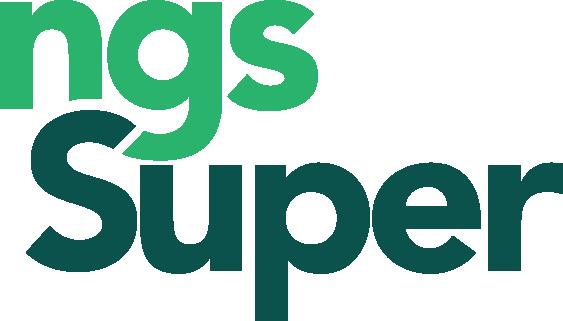
35 years of partnership with IEU NSW — built on what matters to our members. That’s why we focus on:
• Strong performance – double-digit returns even in tough conditions.*
• Competitive fees – so more money stays invested
• Providing award-winning service – when and how our members need it, including workplace visits from NGS Super Specialists
• Easy-to-use online tools and education

